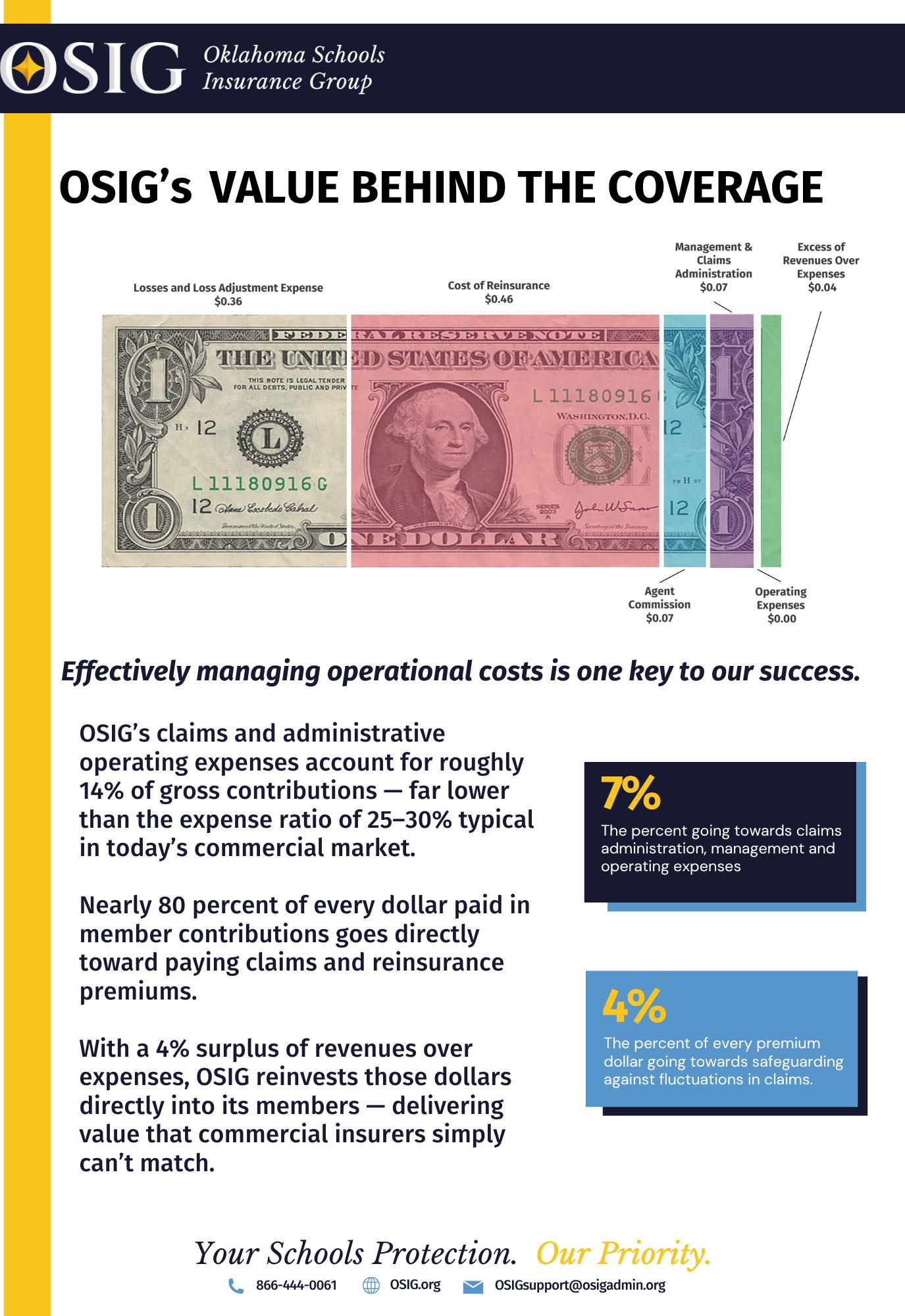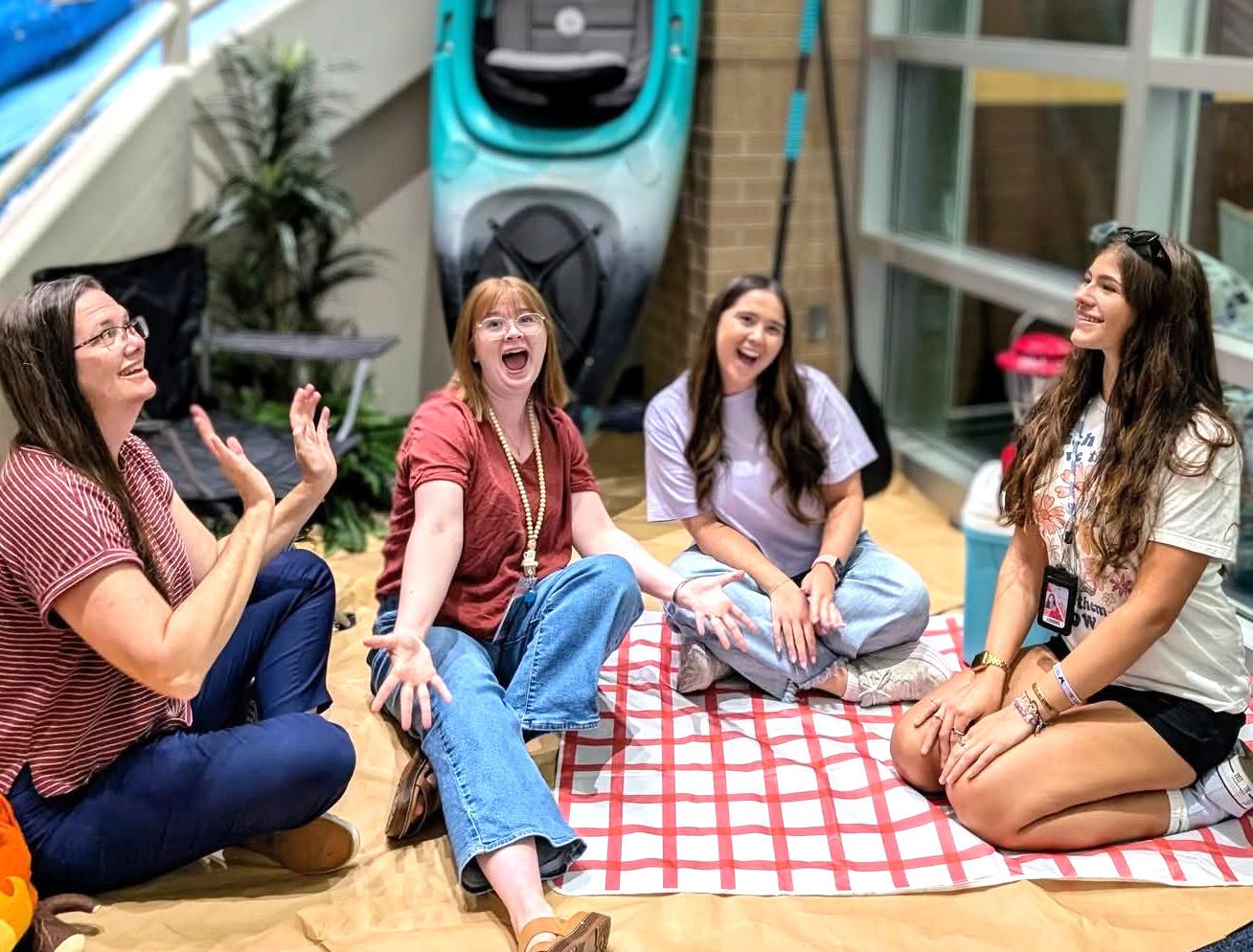

Back-to-School Adventures
Thanks to Norman’s New Teacher Academy, a lively crew of incoming educators started the school year strong.


Your Oklahoma Partner

Our team provides Oklahoma with a different opinion. When you partner with us, you get the unique value of working with a local provider. Not only are your dedicated representatives local to Oklahoma, but we also service your entire account from our Oklahoma City headquarters. From billing, customer service, claims, compliance support and technology, we deliver a local experience for you and your employees.
Benefits are confusing. Having a team in your own backyard to provide personal service, walk through a claim, or at times, hand deliver a benefits check, are not services you are likely to find anywhere else.
We’ll continue to help your staff:
Create a benefits package to accomplish their goals
Provide benefits education and enrollment support through one-onone benefits reviews and group meetings
Offer support throughout the plan year with any benefits questions you or your employees may have
American Fidelity has been a longtime partner with CCOSA. They have provided important services and products to Oklahoma school leaders and staff for many years. American Fidelity offers a variety of programs to school leaders and staff with health and wellness options that can improve and protect their lives as they lead schools for student success.

1,2
Dr. Pam Deering Executive Director
at CCOSA

Laura Bullock
CCOSA Chairperson
OMLEA Past-President Director of Special Services, Idabel Public Schools
Michelle Dalton
CCOSA Vice Chairperson
ODSS President Director Special Services, Krebs Public Schools
Dale Spradlin
OASA President Superintendent, Buffalo Public Schools
Dr. Stacey Butterfield
OASA President-Elect Superintendent, Jenks Public Schools
Joe Ballard
OASSP President Principal, Poteau HS
Blaine Wise
OASSP President-Elect
Principal, Glenpool MS
John Potter
OMLEA President
Assistant Superintendent, Pryor Public Schools
Skeeter Sampler
OMLEA President-Elect
Director Secondary Education, Lawton Public Schools
Amy Estes
OAESP President Principal, Hollis ES
Dr. Ryan Glaze
OAESP President-Elect Principal, Jenks East ES
Leslie Burnett
ODSS President-Elect
Director Special Services, Pryor Public Schools
Scott Farmer
PAC Representative Superintendent, Fort Gibson Public Schools
Dr. Gregg Garn
Higher Education Liaison
University of Oklahoma

Choosing the High Road in Uncertain Times
By Dr. Pam Deering, CCOSA/OASA Executive Director 11
Celebrating 50 Years of CCOSA
A Photo Gallery From the 50th Anniversary “A Golden Legacy: Shaping the Future” Summer Leadership Conference 17 Coming
Soon: CFO Leadership Academy!
CCOSA and OKASBO are partnering to offer large district Principals and Central Office staff a year’s worth of CFO training.
19 2025 Legislative Session Mandates
A rundown of new requirements for schools for the 2025-26 school year and beyond.
By Dr. Jeanene Barnett, CCOSA Director of Policy, Research & TLE
21 2025 Interim Studies
A preview of education-focused legislative studies this fall.
By Dr. Jeanene Barnett, CCOSA Director of Policy, Research & TLE
23 Federal Funding for FY26 and Funding Forecast for FY27
What we know about the federal funding landscape.
By Kathy Dunn, CCOSA Director of Professional Learning, State and Federal Programs

32
Nurturing New Talent
Norman Public Schools
Personalized Approach for New Teacher Support By Sarah Seymore, Director of Professional Learning and Development, Norman Public Schools
54 Read to
Lead:
The 21 Irrefutable Laws of Leadership (25th Anniversary Edition by John C. Maxwell)
A deeper dive into three principles relevant to K-12 education.
By Dr. Jeanene Barnett, CCOSA Director of Policy, Research & TLE and Chris LeGrande, Executive Director of OMLEA and OASSP
Cover caption: Before school started, Norman Public Schools held a New Teacher Academy with a "Your Adventure Starts Here" camping theme to welcome new teachers to the district.
INTERNET DESIGNED FOR EDUCATION
Ensuring your students can fully participate in the digital learning age requires internet designed to support education.
As a division of the Oklahoma State Regents for Higher Education, OneNet is uniquely designed for education at all levels. From K-12 schools to higher education, OneNet understands your school’s needs and provides the high-speed connectivity required to fulfill them.
OneNet powers more than 250 K-12 schools, 45 technology center campuses and every public higher education institution in Oklahoma.

Learn



Family Engagement:
It’s more than open houses and parent-teacher conferences – effective family engagement is about connection and collaboration.
By Laura Beaver and Jill Nolen, Silver Ink Publishing
Deliver Results With High-Impact Tutoring
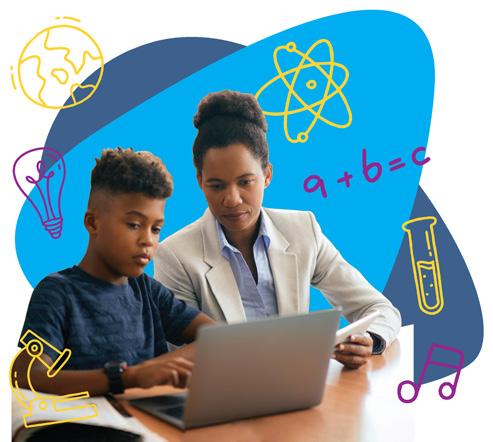
In this reprint from NAESP’s Principals magazine, the authors make a case for frequent, aligned interventions as a proven strategy for helping close achievement gaps.
By Susanna Loeb and Erin McMahon
CCOSA Staff
Dr. Pam Deering
CCOSA/OASA
Executive Director
Derald Glover
OASA Assistant
Executive Director
Chris LeGrande
OASSP/OMLEA
Executive Director
Glen Abshere OAESP Executive Director
Andrea Kunkel
CCOSA General Counsel
ODSS Executive Director
Dr. Jeanene Barnett
Director of Policy, Research, and TLE
Kathy Dunn Director of Professional Learning, State and Federal Programs
Paige Kelpine
Marketing, Events & Corporate Partner Services Specialist
Cynda Kolar
Business Manager
Lynne White OAESP Executive Assistant & Assistant to the TLE Coordinator
Nicole Donnelly
Membership Coordinator & CEC Executive Assistant
Jen Knight Executive Assistant
Kasiah Mims
OASA Executive Assistant
Catherine Goree
OASSP/OMLEA/ODSS Executive Assistant
Leadership Conversations
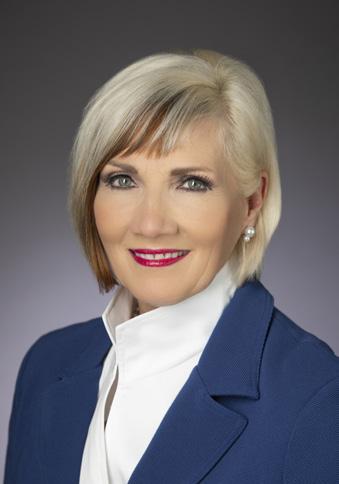
Choosing the High Road in Uncertain Times
Dr. Pam Deering, CCOSA/OASA Executive Director deering@ccosa.org
Dear Oklahoma School Leaders,
As we prepare to usher in another school year, we do so with full awareness of the ever-evolving challenges in public education. From funding constraints and legislative pressures to educator shortages and increased expectations, the weight you carry as educational leaders is substantial – and at times, overwhelming. Forces that try to separate people and create division are many. Yet, in the face of these obstacles, I am reminded of a powerful message from John Maxwell’s High Road Leadership: Bringing People Together in a World That Divides: “High-road leaders don’t focus on the chasm between people. They focus on connection.”
Taking the high road is not always the easiest path, nor is it the most popular. It demands humility, integrity, resilience, and a commitment to excellence even when the circumstances around us fall short. It asks us to lead with vision and values, not reaction or resentment. And perhaps most importantly, it calls us to believe in the transformational power of education and in one another.
What Does the High Road Look Like in Oklahoma Schools?
For Oklahoma leaders, the high road means continuing to advocate passionately for our students and teachers while maintaining respect for the process and those we partner with – even when we disagree. It means choosing transparency over expediency, courage over comfort, and service over self. It means rising above the noise and negativity to focus on what truly matters: creating schools where every child can learn, grow, and thrive. In times of discord, the high road is often the lonelier route. But as leaders, we must go there first. We set the tone for our school communities. When we take the high road, we invite others to join us – our staff, our students, our school boards, our communities, and yes, even our critics. Our leadership becomes not just positional, but transformational.

Staying Steady in the Storm
As John Maxwell notes, “Everything rises and falls on leadership.” In Oklahoma, we’ve weathered many storms together – and we know there may be more ahead. But I believe with all my heart that the strength of our public schools lies in the quality of our leadership.
At CCOSA, our mission is to support, develop, and advocate for leaders like you who choose courage, character, and compassion. You are the difference makers. Whether you lead a school building or a district, your influence is profound.
So as you enter this new season, I encourage you to:
■ Lead with purpose. Keep your eyes fixed on what’s best for children.
■ Speak with integrity. Words have power –they matter. Use them to build, not break.
■ Act with courage. Even when it’s hard. Especially when it’s hard.
■ Connect with others. The high road is not meant to be walked alone. Lean on your CCOSA network and fellow leaders across the state.
You are not alone on this journey. Together, we are building a future for Oklahoma’s children – one decision, one conversation, one act of leadership at a time. Let’s take the high road, not because it’s easy, but because it’s right. And because our students are worth it.
With respect and gratitude,

Dr. Pam Deering Executive Director Cooperative Council for Oklahoma School Administration (CCOSA)
■


Safety Platform is compliant with Oklahoma Alyssa’s Law HB4073. CENTEGIX® is the leader in incident response solutions. Our Safety Platform™, featuring our CrisisAlert™ wearable panic button, is the fastest and easiest way for staff to get help in an emergency, from the everyday to the extreme.
Oklahoma School Safety Starts Here


Celebrating50 YEARS OF CCOSA
A PHOTO GALLERY FROM THE 50TH ANNIVERSARY “A GOLDEN LEGACY: SHAPING THE FUTURE” SUMMER LEADERSHIP CONFERENCE
More than 1,700 attended the 2025 CCOSA Summer Leadership Conference at the Oklahoma City Convention Center.



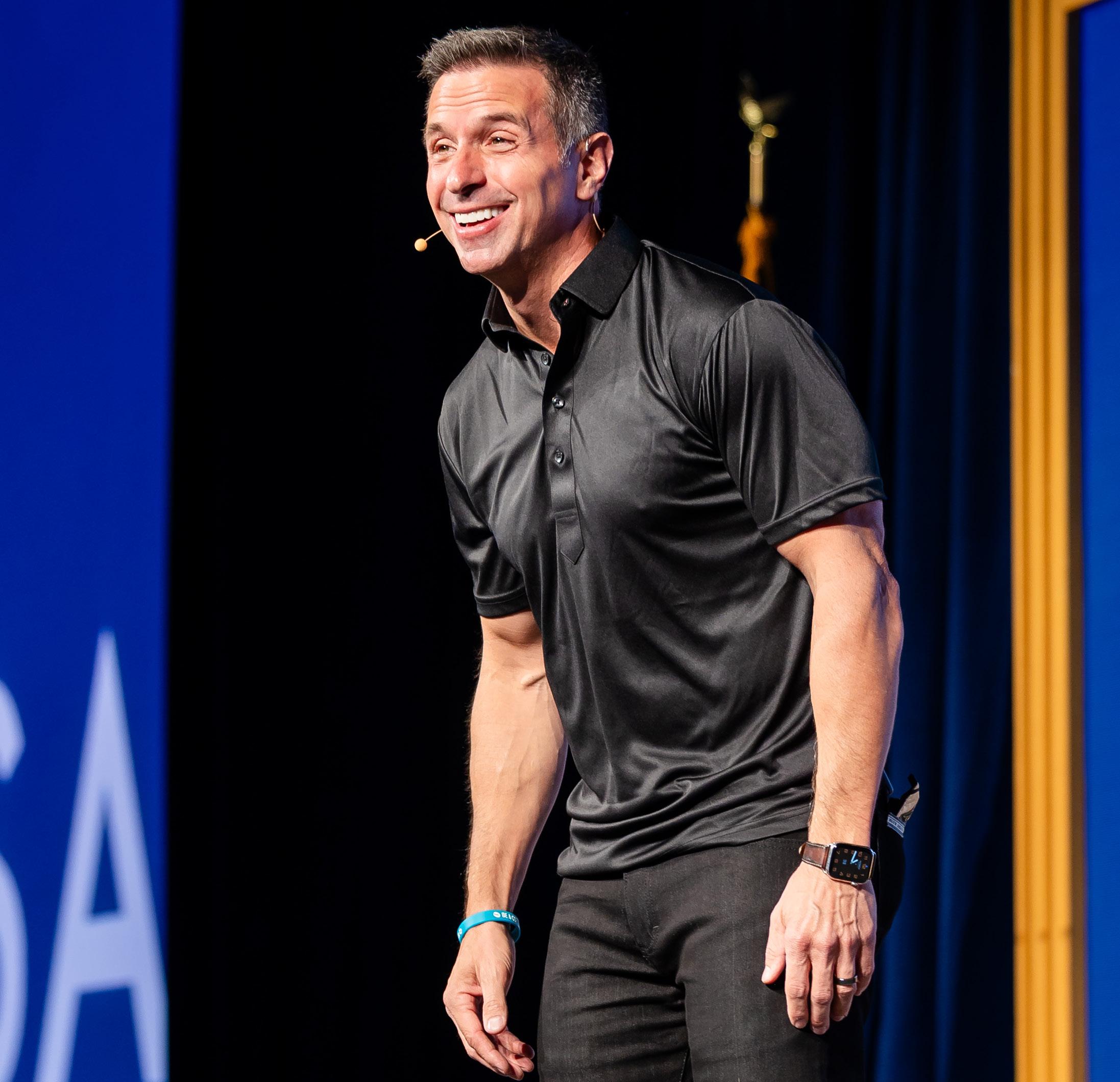

Members of the 2025 Emerging Leaders Academy Class.
Damon West, co-author of The Coffee Bean: A Simple Lesson to Create Positive Change, inspired attendees in his keynote on the conference’s final day.

OAESP member Andrea Sifers, Principal at Fort Gibson Intermediate Elementary, designed and made this jacket for CCOSA Executive Director Dr. Pam Deering and presented it to her with OAESP members Ashley Hoggatt, Tara Burnett, and Traci Newell.


Attendees at the OAESP Breakfast.
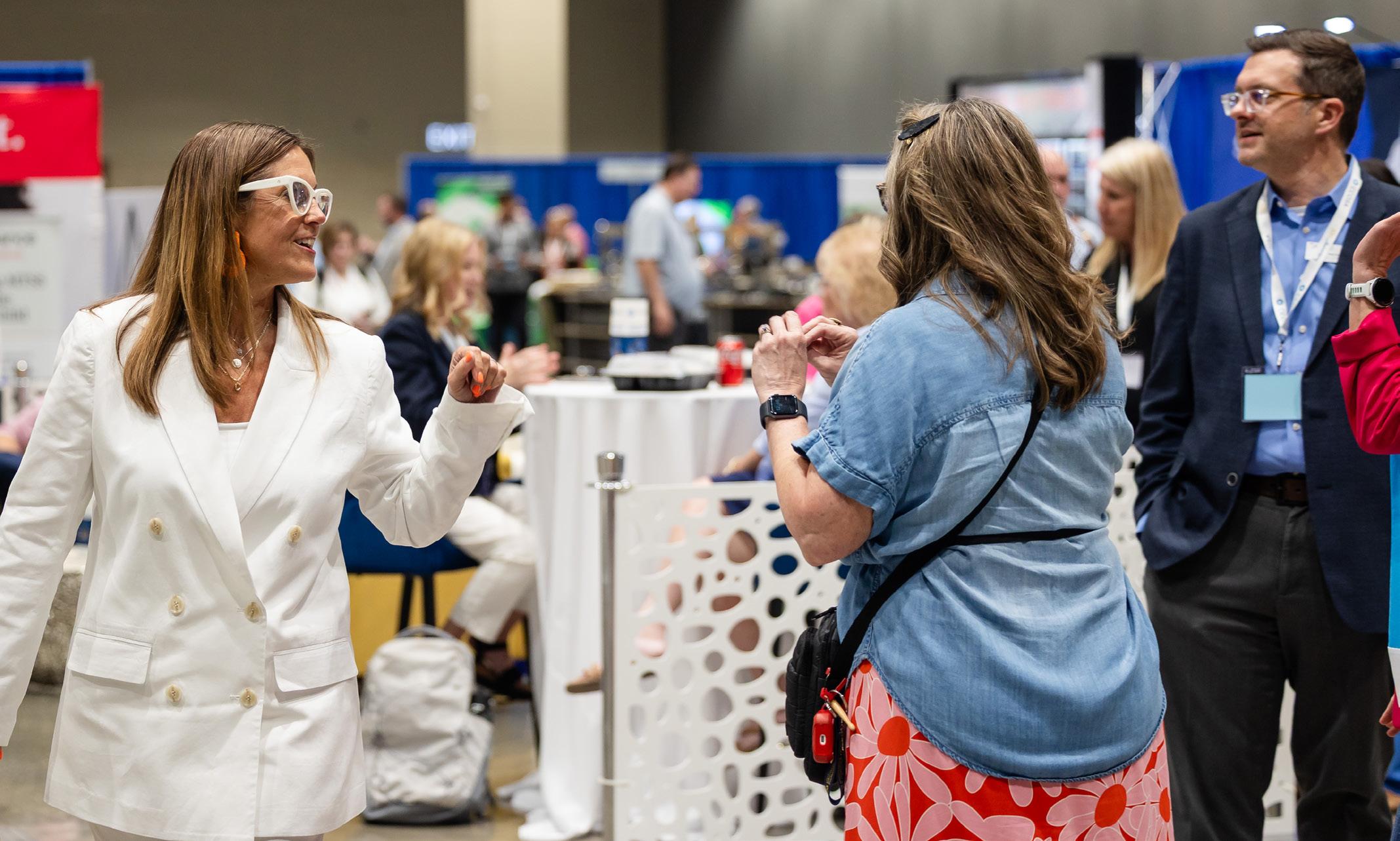
The exhibitors' area, more than 400 vendors strong, bustled with activity throughout the conference.

Stephen M.R. Covey, who authored Trust & Inspire: How Truly Great Leaders Unleash the Greatness in Others, was the keynote speaker on Thursday, June 12.

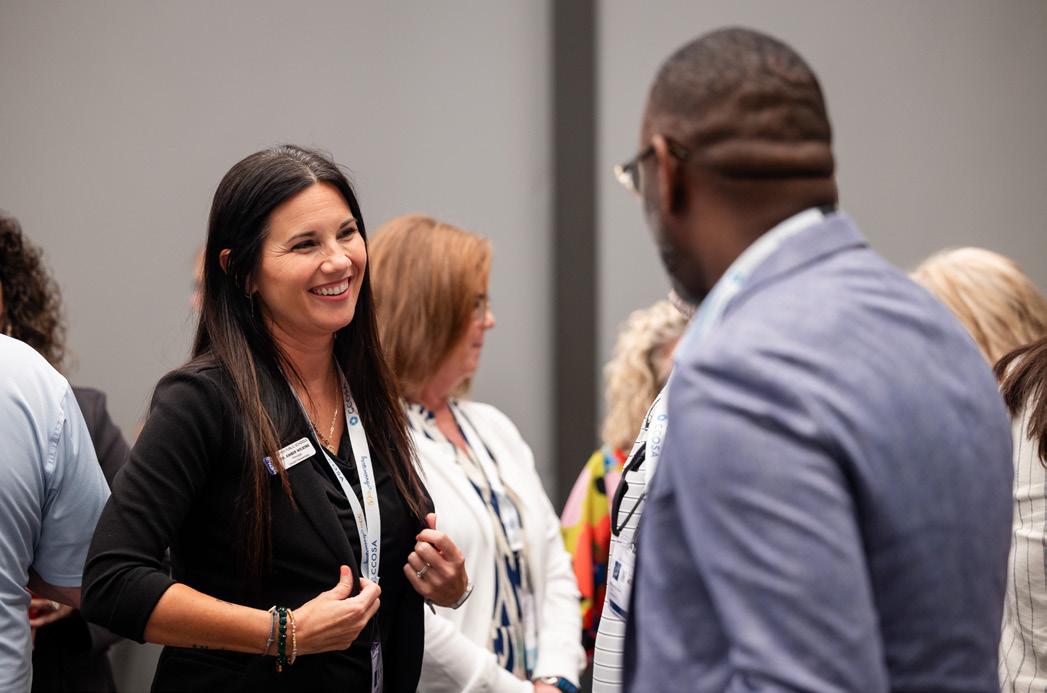
Regardless of the year, one of the highlights of the conference is the chance to connect with fellow educators.

Baxter, former ODSS President and Director of Special Services for McAlester Public Schools, at the ODSS Breakfast.

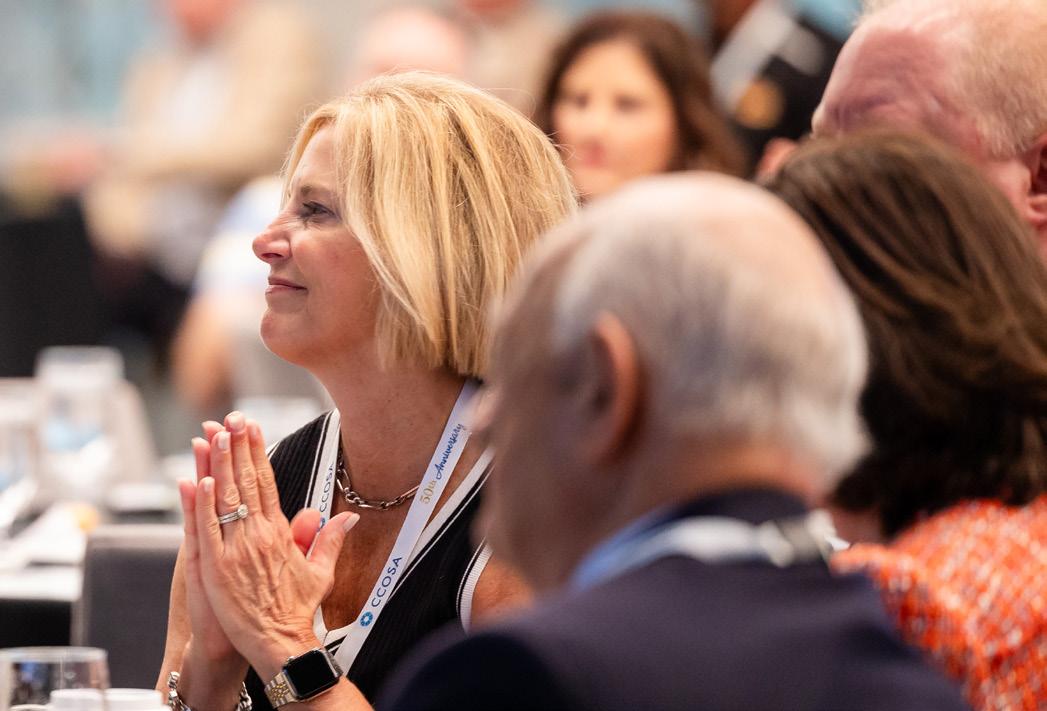
Attendees at the OASA Banquet.

Kim
CCOSA Summer Conference participants have one thing in common: making sure students have the tools for success.


Our Dual Defense expertise focuses on both physical security and cybersecurity solutions, ensuring that students and teachers can concentrate on the most important aspect of school: learning and growth.

challenges; we’re anticipating the needs of tomorrow, securing a foundation for education where every student can thrive in safety and confidence.













Same or better benefits with 15-25% savings
Same or better benefits with 15-25% savings
Same or better benefits with 15-25% savings
Less administrative burden for those in business, payroll
Less
Less administrative burden for those in business, payroll
Less administrative burden for those in business, payroll
Comfortable, convenient online and in-person enrollment options
Comfortable,
Comfortable, convenient online and in-person enrollment options
Comfortable, convenient online and in-person enrollment options
Service from the member association you know and trust
Service from the member association you know and trust
Service from the member association you
Service from the member association you know and trust







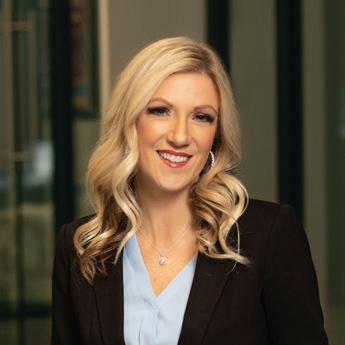





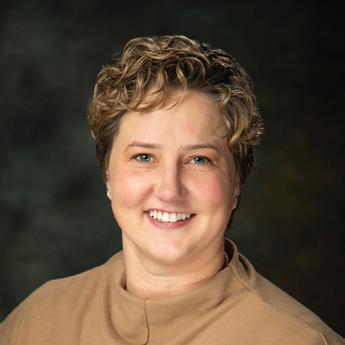







CFO Leadership Academy!
Attention, K-12 Principals and Central Office leaders, a CFO Leadership Academy is coming your way! At the request of school finance leaders, CCOSA is excited to partner with the Oklahoma Association of School Business Officials (OKASBO) to bring this exciting new program, CFO Leadership Academy, to Oklahoma school leaders who may have an interest in learning the role of the Chief Financial Officer (CFO) in a public school district. “With over ten CFOs leaving in the past five years, it is difficult to find qualified people who know and understand schools and their budget processes, financial planning, compliance, revenue management, and strategic financial leadership,” said Dr. Cordell Ehrich, CFO for Deer Creek Schools.
Program overview: This year-long program is designed to equip targeted school leaders (as defined below) with skills to help them learn the business side of public school finance. During the year, participants will meet in person two or three times with additional virtual meeting dates and touchpoints for the group at the CCOSA and OKASBO conferences.
Who is the target audience?
Principals, Assistant Principals, and Central Office leaders in 5A and 6A districts as defined by the OSSAA basketball guidelines for district size. Applicants will need the approval of their Superintendent or supervisor to participate.
Who will lead the sessions?
Participants will learn from current practicing CFOs, CCOSA, OKASBO, and other school finance experts in the state.
How to participate? Based on an application process, the program is designed to create a small group of emerging CFOs who will be prepared
to step into the CFO role with the assistance of career CFOs, their fellow cohort participants, CCOSA, and OKASBO. The goal for the first class will be between 10 and 15 participants. Additional information about the CFO Leadership Academy will be forthcoming.
What is the cost? The cost for the program is $500 to cover presenter costs, food, supplies, and other miscellaneous expenses. Twentyfive dollars ($25) will go toward an OKASBO membership for the current year.
PROPOSED MEETING DATES:
September 23, 2025: CCOSA Office in Oklahoma City
November 4, 2025: Virtual
January 20, 2026: CCOSA Office
March 10, 2026: Virtual
April 22-23, 2026: OKASBO Conference in Oklahoma City
May 28-29, 2026: CCOSA Conference in Oklahoma City
COURSE SCHEDULE AND TOPICS (proposed):
1. Introduction to School Finance and the Role of a CFO
2. State and Federal Funding Sources
3. Budget Development and Management
4. Bond Funds and Capital Projects
5. Payroll, Compensation, and Benefits
6. Revenue Generation and Alternative Funding
7. School Finance Law and Compliance
8. Purchasing, Procurement, and Vendor Contracts
9. Data-Driven Financial Decision-making
10. Preparing for Financial Audits and Accountability
11. Crisis Management and Financial Leadership
12. Capstone Project and Panel Discussion With CFOs
We hope you will consider this program as we work to build a cadre of well-trained school financial officers in the state. If you have questions regarding this program, please contact Dr. Pam Deering, CCOSA/OASA Executive Director, at deering@ccosa.org, Amanda Burchfield, OKASBO Executive Director, at info@okasbo.org or Dr. Cordell Ehrich, CFO, Deer Creek Schools at cordellehrich@dcsok.org
You may also call the CCOSA office at (405) 524-1191 or the OKASBO office at (405) 237-8306. ■
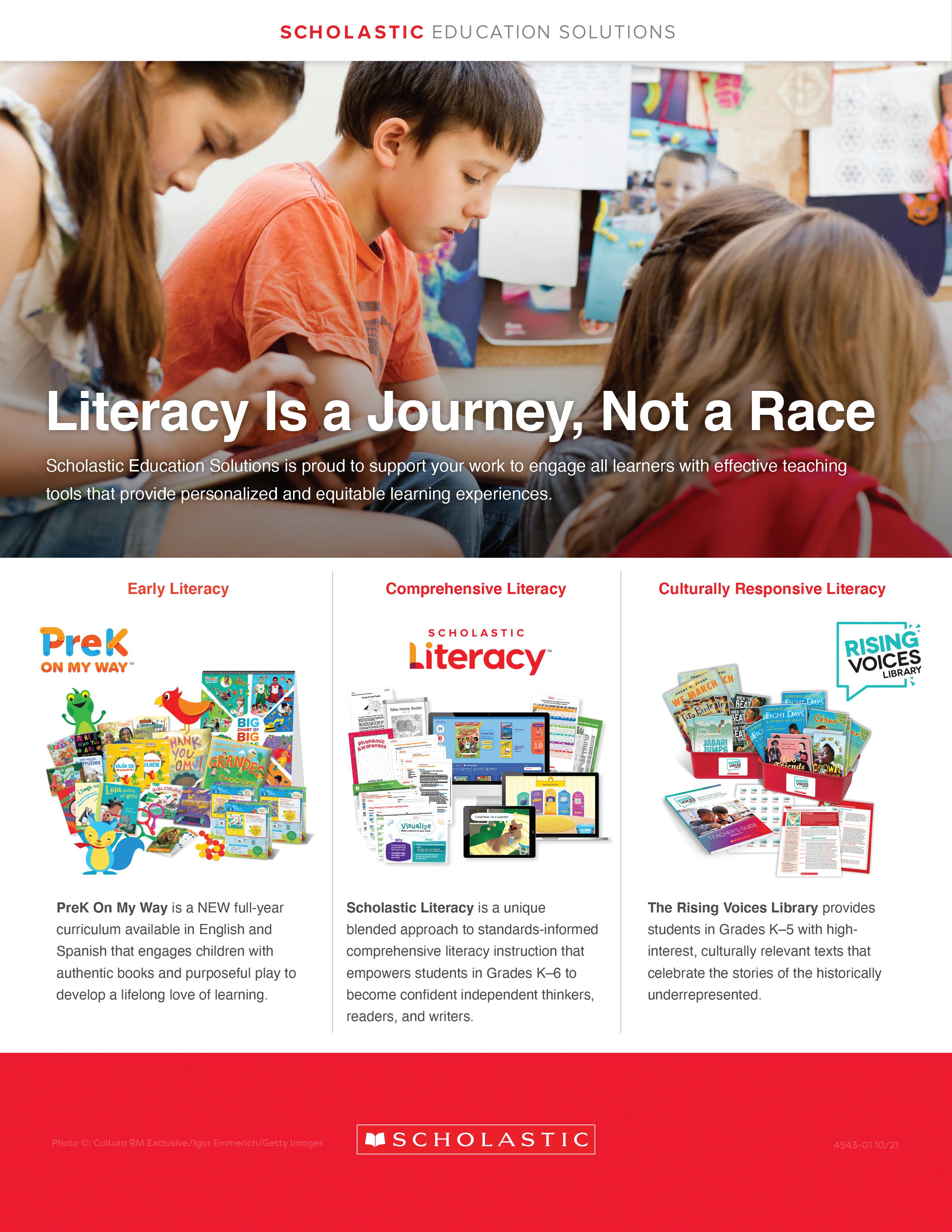

2025 Legislative Session Mandates A rundown of new requirements for schools for the 2025-26 school year and beyond.
By Dr. Jeanene Barnett, CCOSA Director of Policy, Research & TLE
The Oklahoma Legislature has passed several bills over the last two years that have included new mandates for schools. Many of those bills have implementation timelines for the 2025-26 school year; others will not be fully implemented until the 2026-27 school year. Below is a list of those bills. Click on the bill numbers to link to the full bill language or access CCOSA summaries of all the bills here: www.ccosa.org/advocacy/law-changes. The date in parenthesis after the bill number indicates the year the bill passed.
NEW MANDATES FOR THE 2025-26 SCHOOL YEAR (IMPLEMENTED JULY 1, 2025)
HB 1096 (2025) Expands student testing for OK Promise to include the Classic Learning Test. (Effective July 1, 2025)
HB 2047 (2025) Requires notification for epinephrine administration and expands annual mandatory training. (Effective August 29, 2025)
SB 364 (2025) Prohibits using corporal punishment on any student identified with a disability under IDEA. (Effective August 28, 2025)
HB 1075 (2025) Establishes procedures for reporting and handling allegations of abuse or sexual misconduct involving teachers and administrators. (Effective July 1, 2025)
HB 1087 (2025) Increases the required number of school days from 180 to 181 and the required number of school hours from 1,080 to 1,086 (with a required number of days of at least 166) and expands the teacher salary schedule from 25 to 35. (Effective July 1, 2025)
HB 1601 (2025) Extends sick leave for maternity up to 12 weeks as long as the employee has sufficient sick leave to cover it. (Effective November 1, 2025)
HB 2798 (2025) Requires immediate reporting of suspected child abuse or neglect to DHS and stipulates that the penalty for administrators who fail to report or interfere with reporting is a felony. (Effective November 1, 2025)
SB 553 (2025) Provides that SDE cannot issue a certificate or must revoke the certificate of any person who knowingly and willfully fails to report suspected abuse or neglect of a child and requires training with every employee annually signing an attestation acknowledging the responsibility to report. (Effective July 1, 2025)
SB 841 (2025) Requires any person seeking initial certification in special education, early childhood, or elementary education to successfully complete a comprehensive reading instruction assessment. (Effective July 1, 2025)
HB 1393 (2025) Requires approved and signed Parent Consent Form for a student to participate in OAAP. (Effective July 1, 2025)
HB 2259 (2025) Modifies the Education Open Transfer Act to grant the child of military personnel a provisional transfer into a school regardless of capacity. (Effective July 1, 2025)
SB 139 (2025) Requires school boards to adopt policies to implement a “bell-to-bell” cell phone ban for SY 2025-26. (Effective August 29, 2025)
SB 626 (2025) Expands the Security Breach Notification Act to required notice to the AG following a breach if 500 or more residents are impacted. (Effective January 1, 2026)
SB 942 (2025) Requires public schools to integrate the definition of antisemitism into their codes of conduct and to integrate antisemitism awareness into their training for staff and students. (Effective August 29, 2025)
SB 1014 (2025) Requires school districts to provide preference for local bidders of not more than 5% when awarding a public construction contract exceeding $100K or construction management trade contracts exceeding $50K. (Effective November 1, 2025)
210:20-13-1. Teacher Testing Regulations (2025) Requires teacher candidates to pass the written test based solely upon the U.S. Naturalization Test for certification.
210:35-3-5. Flag of the United States (2025) Requires school districts establish a clear policy about the display of the U.S. flag.
210:35-3-106. Guidance and Counseling Services (2025) Requires that schools develop a Comprehensive School Counseling Program and that school counselors spend a minimum of 80% of total work time providing direct and indirect services in the areas of academic advisement, college and career, and life skills and wellness to students.
NEW MANDATES FOR THE 2026-27 SCHOOL YEAR (IMPLEMENTED JULY 1, 2026)
SB 140 (2025) Creates the OK Math Achievement and Proficiency Act, which sets up a clearly defined process to screen students for math proficiency in 2nd-5th grades similar to the Strong Readers Act for reading proficiency with full implementation based on the availability of funding. (Effective November 1, 2025)
SB 758 (2025) Restricts the number of virtual instruction days allowed to two days that must meet strict requirements to qualify. (Effective August 29, 2025) ■





2025 Oklahoma Interim Studies
A preview of education-focused legislative studies this fall.
By Dr. Jeanene Barnett, CCOSA Director of Policy, Research & TLE
The 2025 Oklahoma legislative interim studies cover a broad spectrum of policy areas reflecting bipartisan interests in education. A total of 46 education-related studies were authorized and assigned to various House and Senate committees. Senate interim studies must be completed by October 31, 2025; the deadline for House interim studies is November 6, 2025. Below is a categorized overview of major themes and proposals.
EDUCATION-FOCUSED STUDIES:
A significant portion of the studies focus on K-12 education, including policy reforms, fairness, and access.
Instruction & Curriculum
HSP1011: School safety (Rep. Rick West)
HSP1022: Chronic absenteeism (Rep. Ellen Pogemiller)
HSP1023: Developmental screenings (Rep. Ellen Pogemiller)
HSP1038: High school grade classification based on credits (Rep. Michelle McCane)
HSP1073: Reading readiness (Rep. Aletia Timmons)
Teacher Workforce
HSP1067: Incentive pay for teachers (Rep. Ronny Johns and Sen. Adam Pugh)
HSP1068: Teacher recruitment and retention (Rep. Toni Hasenbeck)
Status and Approval
Many studies were approved as joint studies with the Senate, showing bipartisan collaboration. Several have been referred to appropriate House or Senate committees, such as:
■ House Common Education
■ House Education Oversight Committee
■ Senate Education
■ Senate Appropriations
■ House Appropriations Education Subcommittee
Conclusion
The 2025 interim studies reflect a comprehensive legislative agenda addressing pressing challenges in education, fiscal sustainability, and governance in Oklahoma. These studies serve as precursors to potential legislation in the 2026 session and signal priority areas for both chambers.
SSP1073: Teacher Flex Benefit Allowance (Sen. Adam Pugh)
Technology in Education
HSP1044: Classroom technology (Rep. Chad Caldwell and Sen. Ally Seifried)
HSP1136/HSP1137: Use and ethics of AI in education (Rep. Arturo AlonsoSandoval)
SSP1079: Broader societal impacts of AI (Sen. Ally Seifried)
Postsecondary and School Choice
HSP1045: Concurrent enrollment comparison (Rep. Chad Caldwell)
HSP1125: Rural postsecondary access (Rep. Toni Hasenbeck)
SSP1045: Transparency in school choice (Sen. Carri Hicks)
SSP1049: School choice tax credit (Sen. Darcy Jech)
SSP1071: Homeschoolers and funding (Sen. Dana Prieto)
Nutrition and Basic Needs
HSP1055: Childhood hunger (Rep. Annie Menz)
SSP1072: School lunch programs (Sen. Adam Pugh)
SSP1076: Universal meals for public school students (Sen. Aaron Reinhardt) Student Services
SSP1032: Grief support for students (Sen. Avery Frix)
HSP1142: OSSAA Rule 24 (Rep. Nicole Miller)
Follow the directions below to watch the Interim Study presentation livestreams and recordings.
1. Navigate to the House recording and livestreams webpage to watch House interim studies (which begin with “HSP”) or the Senate recording and livestreams webpage to watch Senate interim studies (which begin with “SSP”).
2. Click the “Recordings” or “Now Playing” tabs on the left side of the page to watch interim study recordings or livestreams, respectively.
3. Identify the correct livestream or recording according to the listed presentation date and time, committee name, and room number.
4. Hover over the correct livestream or recording to click and open the interim study. You will likely have to fast-forward to the start of the study.
Click on the links below to find Interim Study presentation materials once the studies have concluded.
■ Available materials for completed Senate interim studies are organized by interim study number and linked as “Available” on the Senate Interim Studies webpage. Be sure to select the correct year (2025) and click “APPLY” for to populate this year’s interim studies.
■ Available materials for completed House interim studies are organized by interim study number and linked as “25-##” on the House Interim Studies webpage ■


Federal Funding for FY26 and Funding Forecast for FY27
It can be challenging to stay abreast of the federal funding landscape. Here’s what we know.
By Kathy Dunn, CCOSA Director of Professional Learning, State and Federal Programs
Federal funds released after advocacy efforts by CCOSA and education leaders nationwide
As the President of the National Association of State Executives and the Executive Director of CCOSA/OASA, Dr. Pam Deering has worked with leaders across the nation to advocate for FY26 federal education funding to be released. In July, CCOSA’s Oklahoma delegation of educators joined a group of over 200 school superintendents from across the nation to visit Capitol Hill advocating for the release of the impounded funds. Oklahoma superintendents created a template for school districts to visually display the loss of each Title program and the resulting cuts in tutoring programs, reading and math specialists, instructional coaches, mental health professionals, and school security personnel.
2025 Federal Allocation Timeline
March 14
March 14 to June 30
An article in the Washington Post explained, “More than 200 superintendents went to senators’ offices on Capitol Hill this month to plead their case, and some lawmakers worked to pressure the administration to release the funds…. Nearly three-quarters of superintendents who responded to a mid-July survey by AASA, the School Superintendents Association, said they would have to eliminate academic services for students if the rest of the federal funding were not restored.”
Congress passed a Continuing Resolution (CR) with level funding across all federal programs, with slight increases in SPED and Title I.
Schools expected to receive Preliminary Grant Award Notifications (GANS), with Final GANs arriving by July 1 notifying schools of Title Funds allocations based on the CR, as had happened year after year.
May The OSDE Office of Title Services received Preliminary GANs for Title IA and Title IVA.
June 30 The U.S. Department of Education released a memo stating that Final GANs would be issued for Title IA & D and Title V but 4 other Titles would be impounded for further review, including Title IV (for which the preliminary GAN had already been received) to determine if funds were spent in accordance with the President's priorities and the Department’s statutory responsibilities.
July 18 The White House announced that $1.3 billion in 21st Century grant programs would be released if states provided new assurances on how the funds would be spent.
July 21 SDE announced that carryover will be accessible for Titles I, II, III, IV, and V.
July 25 Dr. Pam Deering received word while in Washington, D.C., leading an ASE meeting that President Trump had released the remaining federal funds for FY26.
What can we learn from the impoundment of federal education funds
in 2025?
■ Business as usual can become quite unusual.
■ Individual advocacy matters.
■ Our collective advocacy as members of an association of dedicated educators matters.
■ Losing federal funding would be devastating to our unwavering commitment to accelerate learning, close the achievement gap, and establish in our schools every component of highly effective schools, which includes:
■ An effective teacher in every classroom
■ Training in evidence-based instructional strategies
■ Strong school leaders highly skilled in instructional support, fiscal responsibility, building relationships with students, parents, staff, and community, and facility management
■ The release of federal funds was eventually swayed by ten Republican Senators who signed on to a letter requesting the release of the federal funds, signaling a lack of sufficient votes to pass a rescission of the funds.
■ Our votes matter, and our voices matter. The single best way to make our voices heard is for every educator to vote for pro-education candidates in every election.
■ Our community members’ votes matter, and we should help our community members understand education issues and the impact of proposed changes to any funding source, federal or otherwise.
What happens next?
■ With FY26 federal allocations on the way to the nation’s school districts, attention must turn to budget proposals for FY27. As is often the case, the nation is facing a government shutdown at the end of September if a Federal Budget or a Continuing Resolution is not passed before that time. President Trump’s proposed budget for FY27 is in the table below.
■ The four pink rows display the programs whose funds were impounded for a time this spring and were recently released for FY26.
The proposed budget for FY27 shows $0.00 for the programs highlighted in yellow, designating which programs the president proposes to cut.
The beginning stages of developing the FY27 budget show a positive starting point in the Senate Appropriations Committee. According to Tara Thomas, Senior Government Affairs Manager for AASA, the “Senate Appropriations Committee passed its Fiscal Year 2026 [Oklahoma FY27] Labor, Health and Human Services, Education and Related Agencies (LHHS) bill with bipartisan support. The bill provides small increases for Title I, IDEA, and REAP and level funds the most other K12 programs.”
Thomas emphasizes that this is only the first step in a very long appropriations process.
U.S. Department of Education Budget Table

Chart found here: https://www.ed.gov/about/ed-overview/annual-performance-reports/budget/budget-tables/ fiscal-year-2024-fy-2026-presidents-budget-state-tables-us-department-of-education
(must click return twice after inserting the web address)

U.S. Senate Appropriations Committee Education Budget Proposal for FY27
Programs With Increases Programs With Level Funding Programs With Decreases
Title IA: + $50 million increase
IDEA, Part B: + $50 million increase
REAP: + $5 million increase
Impact Aid
Title IC
Title IIA
Title III
Title IVA
School Safety National Activities: minus $26 million
Full-Service Community Schools: minus $15 million
Education, Innovation and Research: minus $24 million
Reading to Learn TV: minus $2 million
Arts in Education: minus $5.5 million
U.S. House of Representatives Appropriations Committee Education Budget Proposal for FY27
Tara Thomas continues, “The House Appropriations Committee had planned to take up its LHHS bill in late July but postponed until after August recess. The only insight into the House proposal is their ‘interim’ allocation for the entire bill – which represents about a $14 billion cut when compared to FY25. We won’t know the extent of how these cuts will impact education until the full bill is released, but this signals significant differences between the House and Senate versions. There remains widespread concern about a government shutdown in late September should Congress be unable to pass a Continuing Resolution and provide both chambers more time to negotiate spending for FY26.”
What should districts be doing?
■ In the next few weeks, watch for the release of allocations for the Title programs, including the performance period. If the performance period is July 1 through June 30, we can amend budgets and adjust accounting processes to claim those early FY26 salaries, subscriptions, and other projects that are traditionally funded through these federal funds.
■ Watch for the new assurances added by the Trump administration for the use of the federal funds.
■ Begin to consider contingency plans in the event projects funded under this title are not funded in the future.
■ Consider “Supplement Not Supplant” guidance. SNS is determined comparing one year to the next year, but not within a single fiscal year. It is not a violation of SNS if a portion of a project or salary is paid with state or local funds and the rest is paid with federal funds within one fiscal year if that funding strategy is needed for your circumstance.
■ Be strategic about carryover for future funding, keeping in mind the 15% limitation of carryover in Title I.
■ Join the advocacy effort by becoming actively involved in CCOSA to stay current on federal funding issues and to lend your voice to the advocacy activities of the association.
■ Use every federal dollar wisely to provide quality schools with effective Tier I instruction and meaningful interventions in Tier II and Tier III.
■ Celebrate every accomplishment in your school and your community. Promote our public schools – they are the heart of the community! ■



Family Engagement
IT’S TIME TO GET OUT OF THE SILO
By Laura Beaver and Jill Nolen, Silver Ink Publishing
For years, schools measured family engagement with headcounts. If more parents showed up to math night or literacy bingo, we counted it as a win. Food helped. Fun themes helped. And that was the gold standard – get them in the door. But thanks to years of research from experts like Karen Mapp, Ruby Payne, Dr. Steven Constantino, Joyce Epstein, and Anne T. Henderson, we now know better.
True family engagement goes far beyond attendance. It’s not just a number – it’s a call to collaboration That call, though, is big. And let’s be honest – it’s also a little abstract. It requires a major mindset shift. One that moves us:
■ From involvement to engagement
■ From individual responsibility to shared responsibility
■ From random acts to systems and processes
■ And from checking the box to ownership and continuous improvement
Dr. Steven Constantino puts it this way: “Family engagement is not an initiative, it’s a culture, a belief system. It is never about doing more, it is about doing what we already do – only differently.”
For many of us whose job titles include “family engagement,” that shift can feel lonely. Like we’re working in a silo.

Is Family Engagement in a Silo?
A silo is a tall, closed structure that stores grain – but in school systems, “working in silos” means departments or individuals operate in isolation. They don’t share information or collaborate. They plan events, design outreach, and develop strategies alone. The result? Disconnected efforts that don’t reach full potential.
Family engagement has lived in a silo for far too long. It’s often viewed as one person’s responsibility – whether that’s the family liaison, the librarian, an administrator, or the Title I team. One box to check. One event to plan. One pot of money to manage.
But if we want to answer the call to real collaboration, we have to break down the walls of that silo. And maybe the first step is as simple as zooming out.
Family engagement has been boxed into one-time events and compartmentalized communication. Don’t believe it? Picture this: you’re on Family Feud and it’s “Family Engagement Week.” The prompt? Name something your school does to engage families.
The top answers would roll off easily – Open House, Literacy Night, parent conferences, Math Night, Fall Festival. But what about answer #8 on the list? Or #12? That’s when it gets tricky.
You might start listing things that happen more frequently but seem smaller – newsletters, text messages, car rider line chats, a phone call home, a quick checkin at dismissal. Honestly, some of those might earn you a big red “X” and that dreaded buzzer sound.
But here’s the irony: Those everyday interactions are where real engagement lives.
Not in the big, planned, once-anddone events – but in the small moments that build trust over time. Every handwritten note. Every text message home. Every interaction in the hallway, at the front office,

or in a phone conversation – those are opportunities. Opportunities to shift the culture from eventdriven involvement to everyday collaboration
Sounds great, right? But also…a little idealistic.
Looking at everything as family engagement – big and small, formal and informal – can start to feel overwhelming. It suddenly seems bigger than before.
That’s why we don’t just need a new lens. We need a better filter. One that helps us make sense of the everyday without trying to fix it all at once. One that turns this work into a journey, not another compliance task. One that helps every staff member – from the front office to the classroom – see their role in this shift.
It starts with asking three simple questions across every interaction: Engage: How are we sparking interest and increasing family participation?
Equip: Are we providing families with helpful information or tools to support learning at home?
Enrich: How are we building trust, showing respect, and strengthening relationships with each encounter?
When we use these three questions as a filter, we begin to see things differently.
■ That warm smile and greeting to a parent in the hallway… it enriched
■ That reminder text about a skill the students are learning and tips to help at home… it equipped.
■ That vibrant invitation to families for a student-led conference… it engaged
Every interaction doesn’t have to do all three, but when we start looking at what we do through this lens, we recognize what’s already happening and where we can grow. We move from isolation to integration. From silos to systems.
Family Engagement & the Law: True or False?
And here’s the good news –creating that culture doesn’t require a complete overhaul. The most effective change doesn’t come from overhauling everything. It comes from recognizing the value of what’s already happening and building on it. When we help staff integrate small, purposeful changes into everyday interactions, the shift becomes manageable, not overwhelming.
Let’s move beyond events and initiatives. Let’s equip every educator and staff member with a shared understanding, a common language, and a simple framework they can use daily. When we do that, family engagement stops being one person’s job and starts becoming everyone’s responsibility. The silos begin to disappear. And before long, we move from compliance to collaboration –and from collaboration to lasting culture change. ■

Test your knowledge of what federal law – specifically Title I – requires when it comes to family engagement. You’ll find answers at the end of the article.
1. Schools must develop their Parent and Family Engagement Policy on their own and then share it with families. True / False
2. Title I schools are required to hold at least one annual meeting to inform families about their Title I program. True / False
3. Parents must be provided with information about their child’s progress only if they request it. True / False
4. Title I schools are only required to host one family meeting per school year. True / False
5. Schools must offer multiple opportunities for families to
give input – not just rely on one annual survey. True / False
6. Only teachers and staff working directly with students need training on family engagement strategies. True / False
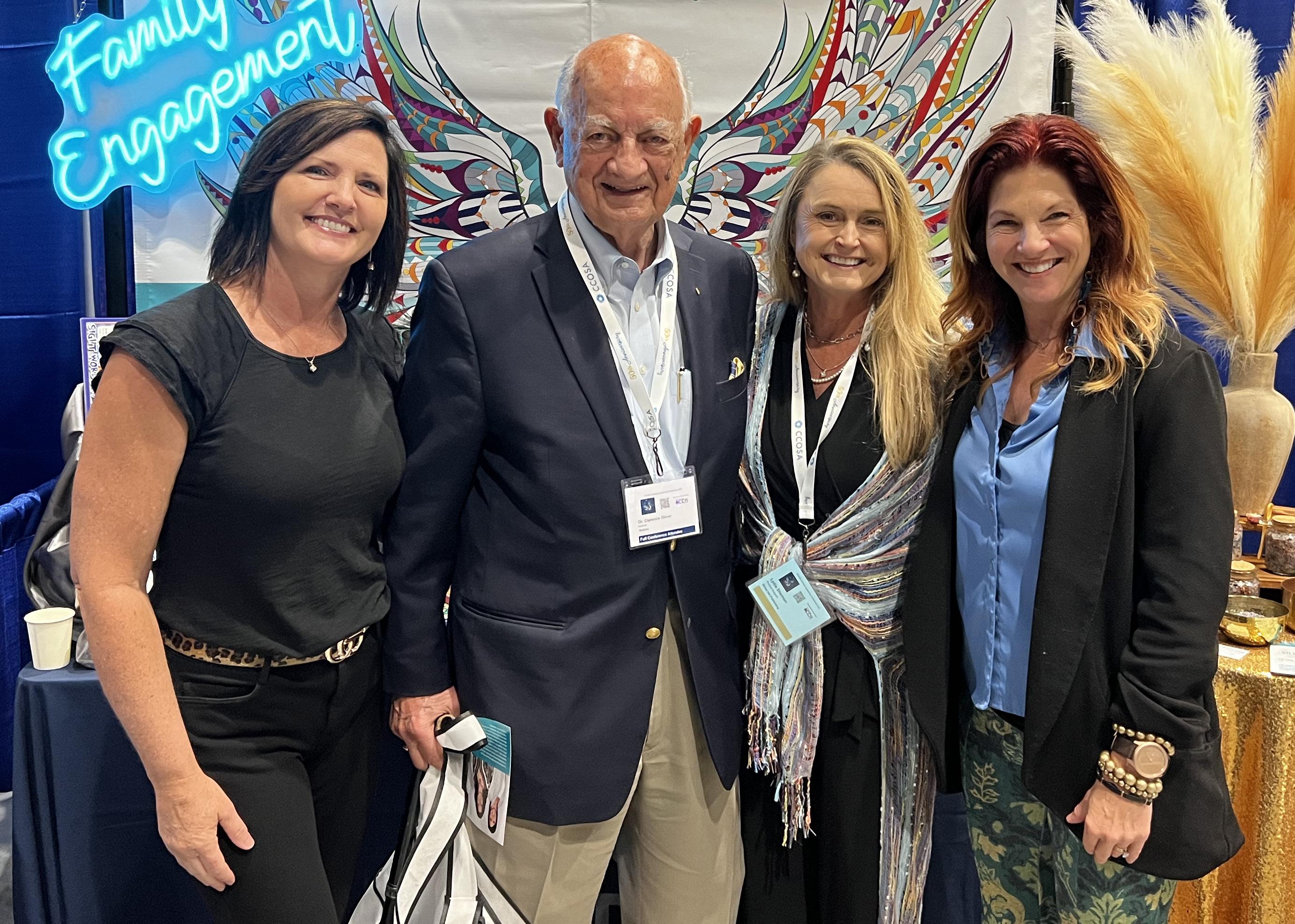
A Meaningful Moment at the CCOSA Summer Leadership Conference
Recently, we had the pleasure of presenting sessions on family engagement at the 2025 CCOSA Summer Leadership Conference – and one moment has really stayed with us.
During the conference, Dr. Clarence Oliver stopped by our Silver Ink Publishing booth. Visiting with him was such a gift. His wisdom, warmth, and legacy in Oklahoma education were deeply moving. Before he left, we shared our children’s books with him, and a few days later, he sent the kindest email letting
us know he had passed them along to his greatgranddaughter, Evelyn.
We hope she enjoys them again and again – and that her family finds the read-aloud strategies helpful as they support her on her journey to becoming a confident, joyful reader.
Moments like these are a beautiful reminder: When we engage, equip, and enrich families – even in simple, everyday ways – we help build a foundation that lasts for generations.
Laura Beaver and Jill Nolen are the owners of Silver Ink Publishing, based in North Carolina. Laura is a District Title I facilitator supporting schools with family engagement, staff development, and federal compliance. She holds a Master’s in Education and is licensed as a K-12 Reading Teacher and Academically and Intellectually Gifted Teacher. Jill is a Tier 3 Reading Interventionist, Literacy Specialist, and Parent Involvement Coordinator at an elementary school. She holds a Master’s in Education and is licensed as a K-12 Reading Teacher.
Answer Key: 1. False 2. True 3. False 4. False 5. True 6. False
Laura Beaver, Dr. Clarence Oliver, Lydia Sherman, and Jill Nolen at the CCOSA Summer Leadership Conference.
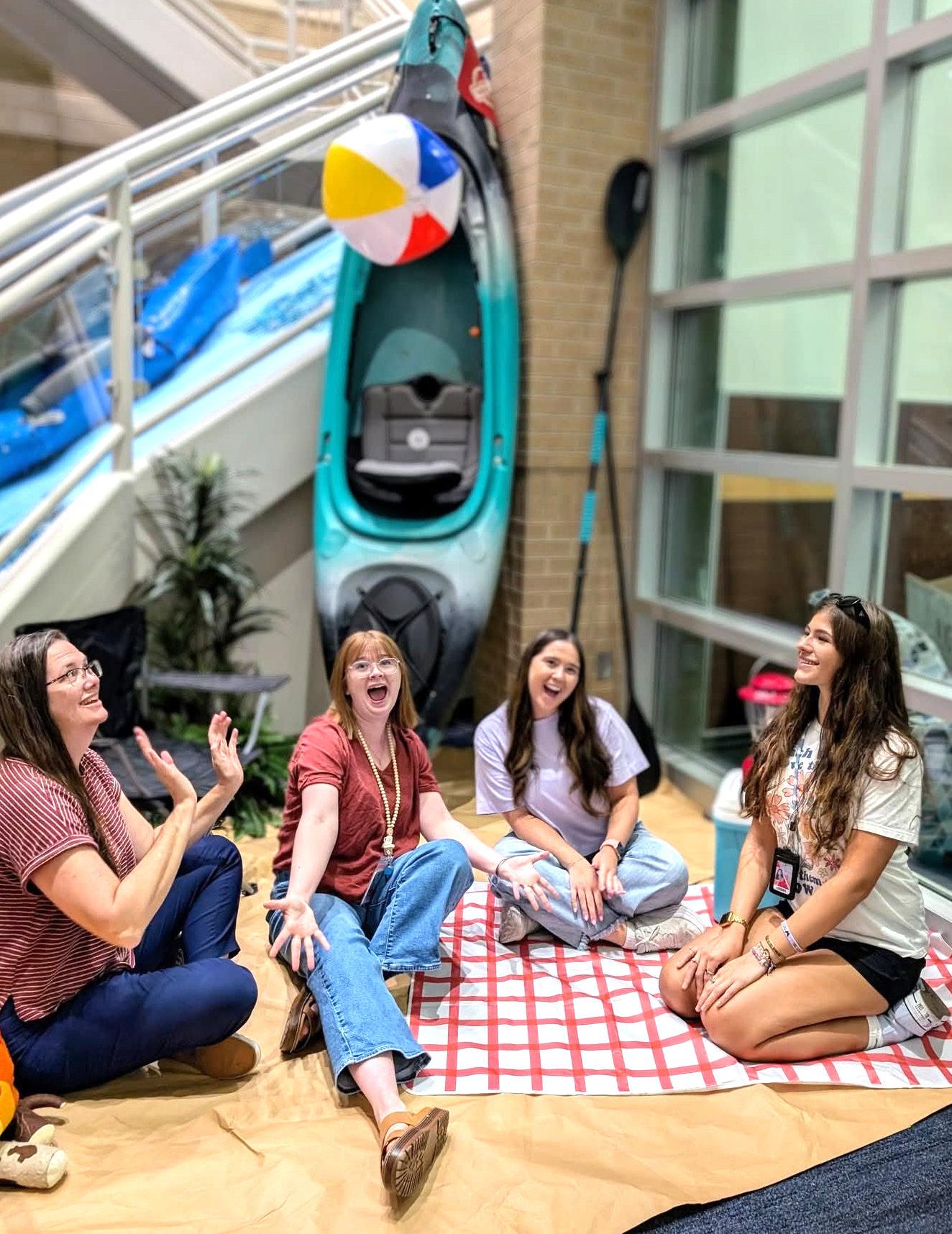
NURTURING NEW TALENT
NORMAN PUBLIC SCHOOLS
PERSONALIZED APPROACH FOR NEW TEACHER SUPPORT
By Sarah Seymore
Norman Public Schools' New Teacher Academy for the 2025-26 school year featured a "Your adventure starts here" camping theme to get educators excited about the new school year.
Starting a new position in education – whether as a brand-new teacher or a seasoned professional entering a new district – can be both exciting and overwhelming. Recognizing the critical importance of early support, Norman Public Schools (NPS) has developed a comprehensive, relationship-based induction model that sets new educators up for long-term success while reinforcing a positive and collaborative school culture.
Intentional mentorship is the foundation of the NPS model. Every first-year teacher is matched with an experienced mentor who provides guidance, instructional support, and encouragement throughout the school year. These mentorships are designed to be partnerships focused on growth, reflection, and building confidence during those critical first months in the classroom.
NPS also ensures that all teachers who are new to the district, whether entering the profession or joining from another system, receive support from a school site liaison. The site liaisons serve as key points of contact, helping new educators become familiar with site-specific expectations, instructional priorities, and the unique culture of each building. This structure allows for smoother integration and fosters a sense of belonging from day one.
In addition to mentorship and site-based support, all educators at NPS have access to instructional coaches who provide job-embedded coaching and personalized professional development. The instructional coaches work directly with teachers in their classrooms to model best practices, offer feedback, and support ongoing reflection and refinement. First-year teachers participate in a formal coaching cycle grounded in the work of Jim Knight, giving them the opportunity to grow their instructional skills with real-time, in-the-moment support.
One of the most impactful elements of the district’s onboarding system is its four-day New Teacher Academy, held each summer before school begins. Recognizing that not all new hires are at the
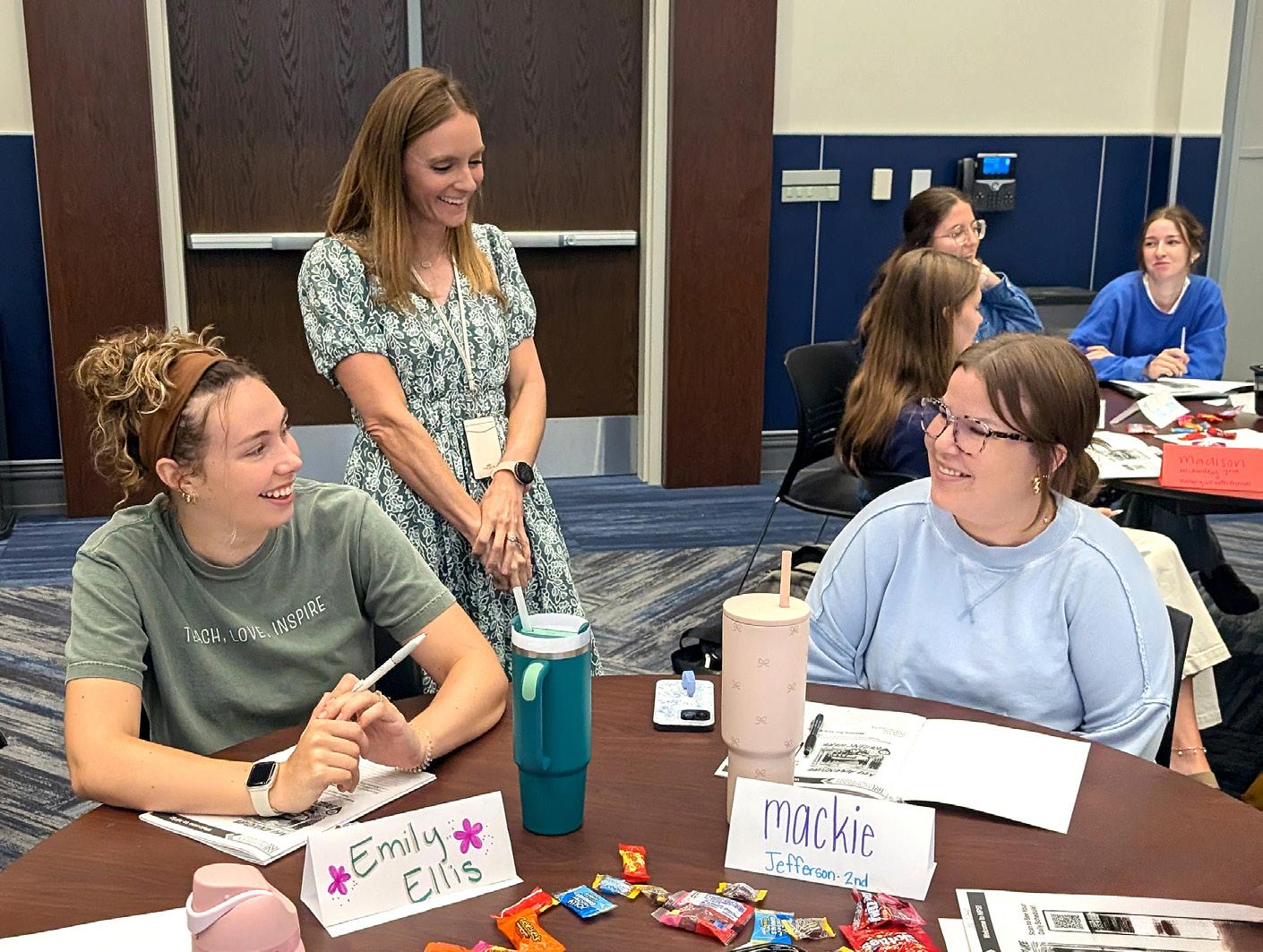
Before school starts each year, Norman Public Schools holds a New Teacher Academy with tracks for early-career and veteran teachers. This year’s Academy included 147 teachers new to the district.
same point in their careers, NPS offers two tailored tracks: one for teachers with 0–2 years of experience, and a veteran track for those with three or more years. This differentiation allows early-career teachers to receive focused support while honoring the knowledge and experience that veteran educators bring to their work. Both tracks ensure that all new staff members leave the academy with a clear understanding of district goals, instructional priorities, and the collaborative culture that defines Norman Public Schools.
By combining mentorship, embedded coaching, differentiated onboarding, and a strong emphasis on relationships, Norman Public Schools has created a model of
support that not only empowers educators but also strengthens student learning outcomes. The intentional structure of the new teacher support program is improving retention, building instructional capacity, and cultivating a positive staff culture. ■
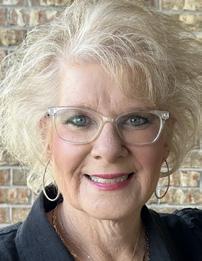
Sarah Seymore is the Director of Professional Learning and Development at Norman Public Schools.


Deliver Results With
High-Impact Tutoring
Frequent, aligned interventions are a proven strategy for helping close achievement gaps.
BY SUSANNA LOEB AND ERIN MCMAHON
In recent years, “high-impact” tutoring has emerged as a central strategy in the principal’s toolbox for addressing students’ academic needs. As elementary and middle school principals, you might have heard about this approach from district leaders, media, or even students’ families.
But what exactly makes this intervention so powerful? And why should it be integrated into your school’s efforts to support the whole child and close learning gaps?
Understanding High-Impact Tutoring
High-impact tutoring takes many forms. It typically focuses on math or reading. It can be provided by educators already in the building, such as paraprofessionals or teaching assistants, or by community volunteers. It can be one-on-one or in small groups, and it can be performed in bursts as short as five minutes or in 45-minute sessions. It can even be virtual or in person.
Across contexts, however, the evidence is clear that it has small- and large-scale benefits. High-impact tutoring is a wellresearched and rigorously defined intervention that:
■ Occurs at least three times a week
■ Involves one-on-one or small-group instruction
■ Pairs students with trained, consistent tutors
■ Aligns with the curriculum
■ Uses data to inform personalization and student needs
“...evidence consistently shows that tutoring conducted during the school day yields far better results than afterschool or summer programs.”
When implemented appropriately, high-impact tutoring approaches have repeatedly proven to be the most effective school-based strategy for accelerating learning in reading and math alike. The results are compelling: Studies show that tutoring can increase student achievement by the equivalent of three to 15 months of learning.
One Principal’s Experience
In Needham, Massachusetts, Karen Rondón-Bourn, principal of Eliot Elementary School, is rewriting the narrative about how some students can achieve. Located in the city’s most diverse neighborhood, Eliot Elementary is the only Title I school in Needham and serves substantial numbers of students of color and multilingual learners.
Rondón-Bourn’s leadership is grounded in the belief that every child, regardless of background, has the potential to succeed. That belief has propelled her to seek solutions for her students’ most pressing academic challenges.
Needham’s K–5 district math coordinator approached RondónBourn in 2023 about participating in a Massachusetts Department of Elementary and Secondary Education (DESE) initiative to support fourth graders struggling in math. Rondón-Bourn was up for the challenge.
Over the previous seven years, she had restructured Eliot Elementary’s special education program, shifting its focus from teaching assistants working with students to universal design for learning and specialized instruction. The school had also introduced an intervention block, the “Eagle Block,” to target foundational skills.
Regrouping students every seven weeks for assessment and

achievement by the equivalent of three to 15 months of learning.”
reevaluation, the data-driven approach led to a reduction in achievement gaps among marginalized students, including students from low socioeconomic backgrounds and multilingual learners. “Once that turning point happened, we started to see some shifts in the way people think about kids,” Rondón-Bourn said.
DESE invested heavily in highimpact tutoring during the 2023–2024 school year, dedicating about $2 million to fourth and eighth grade tutoring and putting an additional $8 million into early literacy tutoring. The program followed best practices for highimpact tutoring: regular sessions at least three times per week, a consistent tutor, and sessions held during the school day in small groups – ideally 1:1 but no more than four students per group. More than 3,500 students received math tutoring statewide.
Key Elements of Success
Rondón-Bourn was soon ready to pilot virtual high-impact tutoring for fourth grade students struggling with math. To do this, she optimized the use of three key elements to implement it effectively:
1. Multitiered Systems of Support (MTSS). Rondón-Bourn embedded high-impact virtual tutoring into the school’s MTSS, already part of the fabric of her school. “Although the results varied, we could adjust our methods based on what the data tells us,” she says. Rondón-Bourn followed the 10-week timeframe recommended for high-impact tutoring and installed regular pre- and post-assessments to monitor student progress.
2. Data-informed student groups. Rondón-Bourn’s team used data to select the students who would participate in interventions. “The goal was to identify those students who are Tier II and Tier III, particularly those who need that little extra push to succeed,” she explains. The team selected a group of four students who were experiencing similar challenges with math content. “This is really good for kids who just need that little extra support, but they don’t necessarily need the instruction through special education” or an individualized education plan, she says.
Core Concepts: Impactful Tutoring
■ High-impact tutoring occurs frequently, consistently, and one-on-one or in small groups. It aligns closely to the curriculum and uses data to assess student needs and inform personalization.
■ Massachusetts schools are using high-impact tutoring to narrow achievement gaps in math, following a seven-week cycle to deliver in-school supports to more than 3,500 students.
■ Funding and scheduling are hurdles that administrators often face in implementing highimpact, in-school tutoring programs, which are proven to deliver better results.
■ To sustain a highimpact tutoring program, leaders must seek funding wherever available, align tutoring to the current schedule and curriculum, and get creative with staffing.

3. Scheduling and facilities. Rondón-Bourn noted that scheduling and space constraints made it difficult to integrate small-group learning into a packed school day. To address this, she held the pilot program in her office during the Eagle Block and supervised virtual tutoring sessions herself. She monitored the sessions to confirm that the tutoring supported what students were learning in the classroom to ensure continuity and reinforce the Tier 1 curriculum.

“By embracing high-impact tutoring as part of their school’s strategy, principals can significantly impact test scores as well as the overall development of confident, capable learners.”

Making Tutoring Work
Funding and scheduling are often the most salient hurdles administrators face in their journey to implement a high-impact tutoring initiative. But evidence consistently shows that tutoring conducted during the school day yields far better results than afterschool or summer programs. Here’s how you can make it work:
Specialized Instruction
Not only did Rondón-Bourn witness academic improvement among the students, but she also discovered the impact of the tutor-student relationship. Virtual tutoring offered a perfect solution for one student who normally falls between tiers of support. “She really thrives with 1:1 attention,” Rondón-Bourn says. “She took it very, very seriously: She was always here on time. She always had her materials. I didn’t have to redirect her when she was in the group.”
Rondón-Bourn believes that the demand for adaptive learning strategies will continue to increase. She says that virtual tutoring could provide specialized instruction during staffing shortages in certain situations – for example, when a school-based math coach is on parental leave and a student needs additional support. “Who wants to work a four-week job?” she asks. The journey is not without its challenges. But each small victory helps Eliot Elementary close achievement gaps and foster a generation of confident, connected learners. “What’s good for kids is the conception,” Rondón-Bourn says. “Strong alignment between programs and curriculum is key to successful interventions.”
■ Seek out funding opportunities. Take advantage of state and/or district resources, federal funds, and community partnerships to sustain your initiative. Federal programs such as Title I, Part A allow districts to allocate resources to closing achievement gaps with tutoring programs. Title II funds can support professional development for teacher-tutors, and Title IV can help schools provide enrichment opportunities such as tutoring as part of their broader academic support strategy.
Principals can leverage programs such as AmeriCorps state and national grants or AmeriCorps VISTA to bring trained tutors into
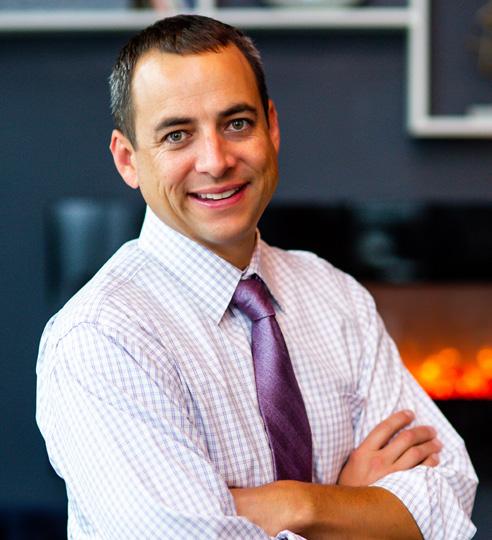

schools at reduced costs. You might also consider federal workstudy funds to employ college students as tutors or apply for philanthropic grants designed to fund literacy and academic interventions. You might need to incorporate several sources of funding to create sustainable tutoring programs that address the needs of all students.
■ Align tutoring to your school’s schedule and curriculum. The goal is to develop a schedule that integrates tutoring sessions into the school day without compromising core instructional time. For example, tutoring can replace noninstructional periods or be integrated into enrichment blocks. For early literacy, short, frequent sessions – short bursts – are a viable and effective option for young learners. Regardless, the content taught in highimpact tutoring sessions must align to the school’s curriculum. “It’s much more impactful if the content they’re doing with the tutor matches what they’re doing in school,” Rondón-Bourn says.
■ Staff creatively. Many successful programs train community volunteers, paraprofessionals, and college students in teacher preparation programs or use teachers already working in the building. Programs such as Minnesota Reading Corps have demonstrated success using trained paraprofessionals and AmeriCorps tutors. With few applicants for open positions, Rondón-Bourn sees a potential for virtual tutors to close expertise gaps in her school
and sees tutors as a means to close expertise gaps when teachers are absent.
By embracing high-impact tutoring as part of their school’s strategy, principals can significantly impact test scores as well as the overall development of confident, capable learners. With the right resources, partners, and a proactive mindset, schools can leverage these tutoring models to better serve all students. ■
More Resources
Explore the free high-impact tutoring resources available from Stanford’s National Student Support Accelerator at studentsupportaccelerator.org.
Susanna Loeb is a professor and faculty director of the SCALE Initiative at the Graduate School of Education at Stanford University and the founder and executive director of Stanford’s National Student Support Accelerator.
Erin McMahon is managing director of the Stanford University National Student Support Accelerator.
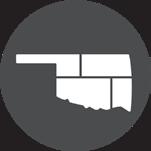
Oklahoma’s AI Reading Assistant
Oklahoma’s focus on intentional and purposeful instruction calls for literacy tools aligned to the Science of Reading. Students all over the nation are surpassing their peers with the help of their personal tutor, Amira.

• Listens as students read aloud to assess mastery.
• Assesses performance and pinpoints specific skills and gaps along Scarborough’s Reading Rope.
• Students progress through productive practice, delivering neuroscience-backed interventions to drive reading growth.


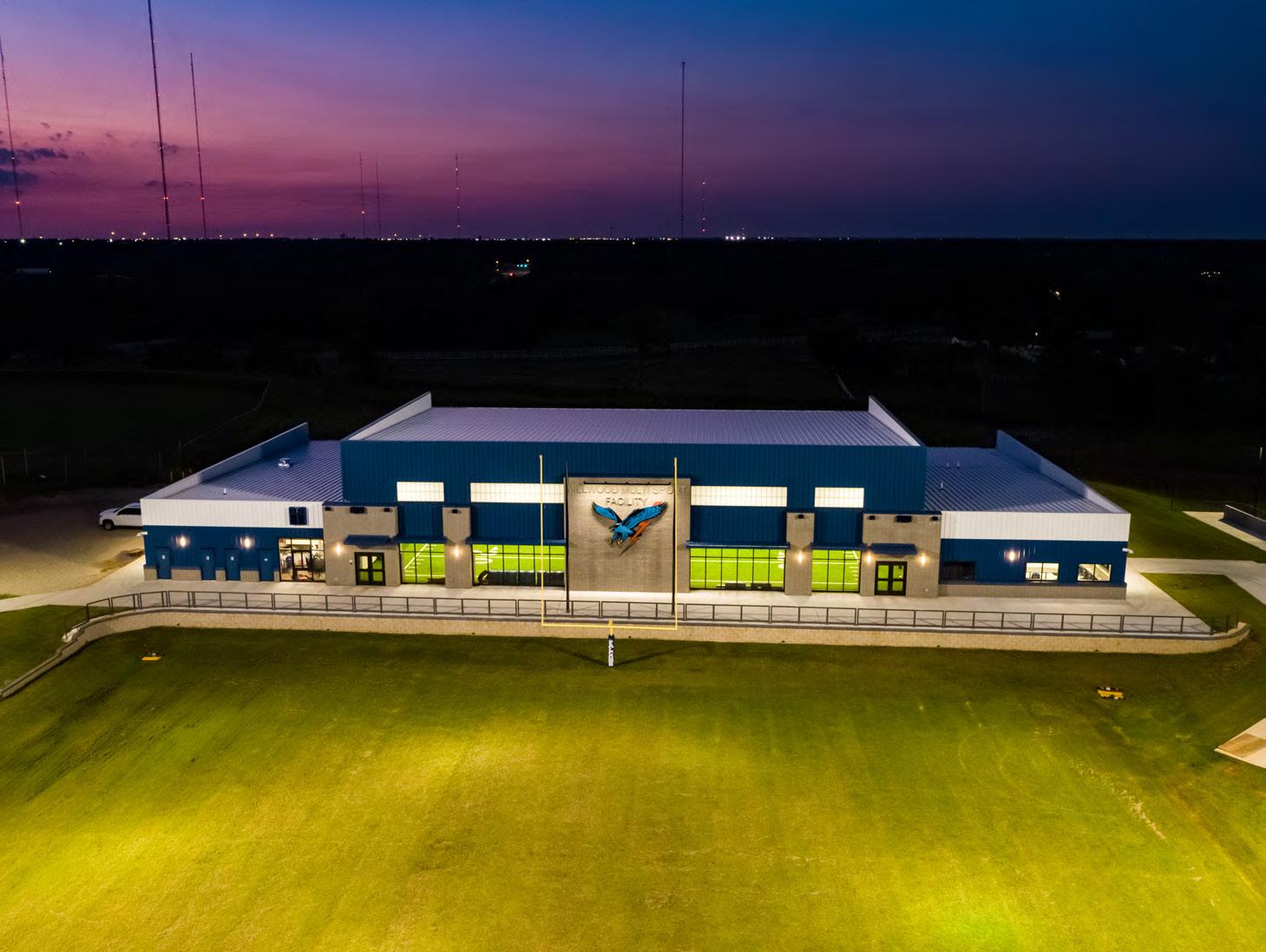




Oklahoma School Assurance Group

OSAG Saves Members 42% in Workers’ Comp Premium!
The Oklahoma School Assurance Group is excited to offer the fully insured, member -owned program that our schools are accustomed to, with better options now available! OSAG's motto is "to provide the most efficient & economical workers' compensation services to Oklahoma public schools", and in doing so, has chosen an improved, more economical alternative for our members.
OSAG has now partnered with AmTrust Financial Services as the insurance carrier for our program. This new partnership is saving 504 OSAG members from a 42% premium increase and offers additional member benefits including a new AmCares Nurse Triage Line, an extensive Risk Control Services Program (details located under the Member Resources / Safety Program & Material section of the OSAG webpage), and a future release to members of a FREE Learning Management System.
*The AmCares Nurse Triage line provides an immediate line to nurse care, assisting with how to properly help the injured worker, as well as completing the First Report of Injury for the district.
With this new transition comes different claims management. A detailed description of OSAG claims management procedures can be found on the OSAG webpage, www.okschoolassurancegroup.org, under the Claims section. Here you will find instructions for pre-7/1/25 claims overseen by CompSource Mutual Insurance Company, and all material/instructions for 7/1/25 to present managed by OSAG-AmTrust to include an OSAG-Amtrust Claims Instruction Video, AmCares Nurse Triage Reference Guide, & the 2025-2026 Claim Filing Packet.
OSAG is proud to serve Oklahoma schools by being the largest provider of workers’ compensation services. Since 1994, OSAG members have saved $116,364,539! This savings includes $33,750,604 in premium refunds, dividends, upfront premium savings, 2018 & 2021 Safety Equipment Grants, & the 2024 Shared Premium Credit award.
*Piccredit: citizensgeneral.com


OASA
Dr. Pam Deering, CCOSA/OASA Executive Director Derald Glover, OASA Assistant Executive Director
The OASA Executive Committee Leadership welcomed new leadership in July with Dale Spradlin, Buffalo Schools, serving as the OASA President for this year. Dr. Stacey Butterfield will serve as President-Elect, Matt Holder will serve as Vice President, and Scott Farmer will serve as Past-President. We want to say thanks to Kevin Hime, Rob Miller, Dixie Purdy, Jason Goostree, Jerime Parker, Rachel Pugh, Dr. Aaron Espolt, and Dr. Cecilia Robinson-Woods, who served on the executive committee last year. New to the OASA Executive Committee as OASA Directors are Dr. Bruce Gillham and Dr. Bob Gragg. New to the AASA Governing Board are members Dr. Matt Posey and Dr. Nick Migliorino. We look forward to serving with these outstanding school leaders in OASA this year.
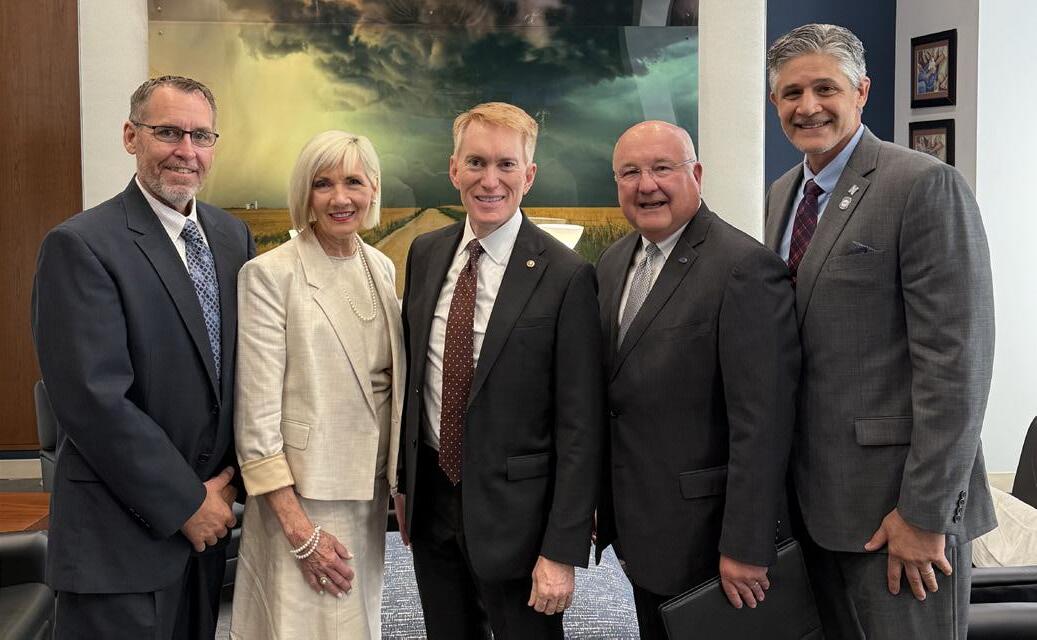
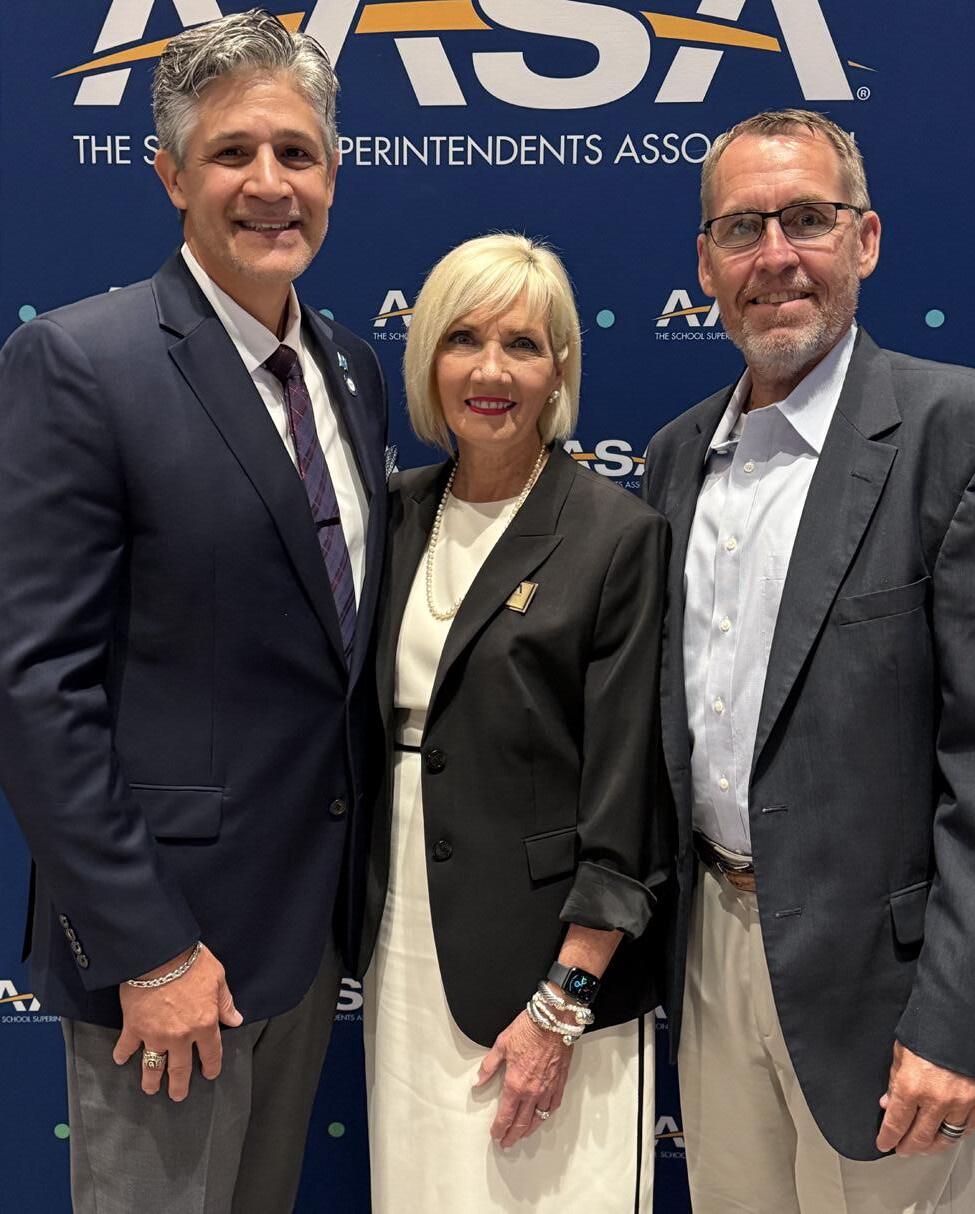
With the impoundment of federal funds as the major issue for schools in July, OASA superintendents traveled to Washington, D.C., for the annual AASA Legislative Advocacy Conference to meet with Oklahoma senators and congressmen. Thanks to Dr. Mike Simpson, OASA Policy & Advocacy Chair; AASA Governing Board members Sherry Durkee, Dr. Matt Posey, and Dr. Nick Migliorino; and past OASA President Kevin Hime and Lawton school leaders Lance Gibbs and Doug Brown for meeting with our Oklahoma representatives regarding this issue and other topics.
Our Oklahoma school leaders came prepared with their district’s data and discussed the impact caused by withholding these already appropriated and promised funds. Because of their efforts and from those attending the conference, the pressure ultimately to release the funds was felt.
We appreciate our Oklahoma districts who utilized the data templates we sent to our members to complete their data and send to their U.S. senator and representatives. Working together, the funds were released! This was a major win for Oklahoma districts and districts nationwide.
Madam President
Dr. Pam Deering earns a well-deserved national leadership position.
During the AASA Advocacy Conference, Dr. Deering was sworn in as a member of the AASA Governing Board for two years as she represents the Association of State Executives (ASE) by serving in the role of President this year. ASE is comprised of executive directors from across the nation and provides a network of support, a voice with the American Association of State Administrators, and advocacy for public school students at the federal level. The ASE state executives recognized Dr. Deering’s success in leading CCOSA to record numbers of members, her dignified approach to leadership, and her commitment to serving the students of Oklahoma. At the end of July, Dr. Deering was inducted as the 2025-26 ASE President during this meeting.
Dr. Matt Posey, Dr. Pam Deering, U.S. Sen. James Lankford, Dr. Mike Simpson, and Dr. Nick Migliorino at the annual AASA Legislative Advocacy Conference.
Dr. Nick Migliorino, Dr. Pam Deering, and Dr. Matt Posey at Dr. Deering’s first ASE meeting serving in the role of President.


Dale Spradlin led the OASA Executive Committee for its 3rd Annual OASA Summit earlier this month as we discussed policy and advocacy, membership, member engagement, and services to our members. Joe Castiglione, OU Director of Athletics, spoke to our school superintendents with a leadership message. His focus was on outreach to OASA members along with a book study on Trust and Inspire, the Stephen M.R. Covey book from our CCOSA conference in June.

The OSSBA/CCOSA Conference is coming up September 4-7. Many of our CCOSA/OASA members will be presenting at this conference as they did at the June CCOSA conference. We are excited for


Say hello to Rooms
apptegy.com


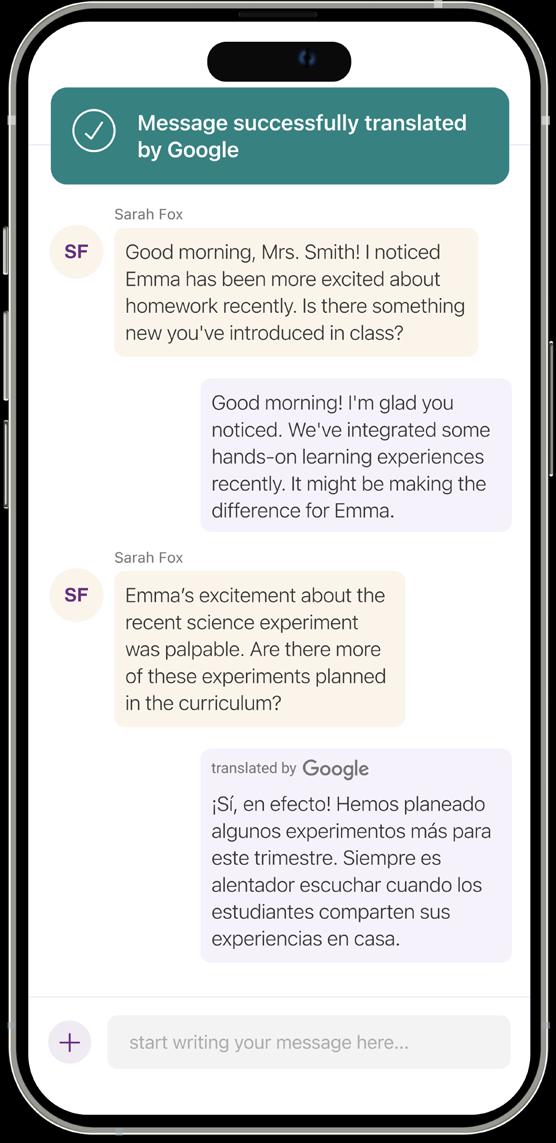


OASSP / OMLEA
Chris LeGrande, OASSP/OMLEA Executive Director
OASSP UPDATE
For the 2024-25 membership year, OASSP proudly concluded the school year with 909 members, exceeding our benchmark goal of 900. This accomplishment contributes to CCOSA’s broader objective of maintaining more than 3,100 active members statewide. We extend our sincere appreciation to new and returning secondary school leaders whose continued support and commitment make this growth possible.
On Friday, June 13, 2025, the OASSP/ OMLEA Breakfast and Business Meeting honored outstanding school leaders during a special recognition ceremony. Held in conjunction with the CCOSA Summer Leadership Conference at the Oklahoma City Convention Center, this year’s meeting carried added significance as CCOSA celebrated its 50th anniversary. OASSP PastPresident (2000–2001) and former Executive Director Dr. Linda Everett (2005–2008) opened the event with heartfelt reflections and historical insights, sharing stories that highlighted the rich legacy of our association.
Administrators of the Year were recognized for their exceptional leadership:
■ Jason Hayes, Edmond Santa Fe High School – OASSP Principal of the Year
■ Jaime Griggs, Tecumseh High School – OASSP Assistant Principal of the Year
■ Blaine Wise, Glenpool Middle School – OMLEA Principal of the Year
■ Dedee Emory, Chouteau Middle School – OMLEA Assistant Principal of the Year
Additional recognition was given to outgoing and incoming regional representatives, along with members who hosted regional meetings throughout the year.
The business portion of the meeting included the approval of the 2025–26 OASSP budget and meeting dates for the upcoming year. Concluding the session, OASSP outgoing president Matt Johnson, Shawnee High School, ceremoniously passed the gavel to incoming president Joe Ballard, Poteau High School, marking the beginning of a new chapter in OASSP leadership.
Below is a six-year overview of OASSP membership trends:
2020: 819 members
2021: 811 members
2022: 890 members
2023: 923 members
2024: 907 members
2025: 909 members

2025-26 OASSP OFFICERS:
Executive Director: OASSP/OMLEA, Chris LeGrande
President: Joe Ballard, Poteau High School
President-Elect: Blaine Wise, Glenpool Middle School
Past-President: Matt Johnson, Shawnee Public Schools
NASSP State Coordinator: Dr. Eric Fox, Jenks High School
Outgoing OASSP Region Reps
At the OASSP/ OMLEA Breakfast and Business Meeting on June 13, Poteau High School Principal Joe Ballard, left, succeeded Shawnee High School Principal Matt Johnson, right, as OASSP President.
Incoming OASSP Region Reps
Region 3: Robb Mills, Enid Dewitt Waller MS Sean Taglialatela, Ponca City HS
Region 5A: Blaine Wise, Glenpool MS Gaylen Urie, Glenpool HS
Region 5B: Crystal Barber, Broken Arrow HS Michael Harp, Bartlesville HS
Region 7: Michelle Brumley, Chouteau MS Arlis Henegar, Jay MS
Region 9: Ryan Schenk, Cashion HS......................... Lauren Coleman, Watonga HS
Region 11: Brian Hummingbird, Warner HS ............ Jeremy Gragg, Eufaula MS
Region 13: Christy Bradley, Mustang North MS Melissa Barlow, Yukon HS
Region 15: Elizabeth Williams, Holdenville HS Chad Brooking, North Rock Creek HS
Region 17: Jeremy Newton, Frederick MS Randy Biggs, Frederick HS
Region 21: Kevin Robinson, Calera HS Kevin Robinson (re-elected)
OASSP APOY: Ashley Mackey, Deer Creek HS.....Jaime Griggs, Tecumseh HS
Thank you to each of these individuals for their leadership and unfailing support of OASSP and for representing the interests of each region’s membership throughout the state!
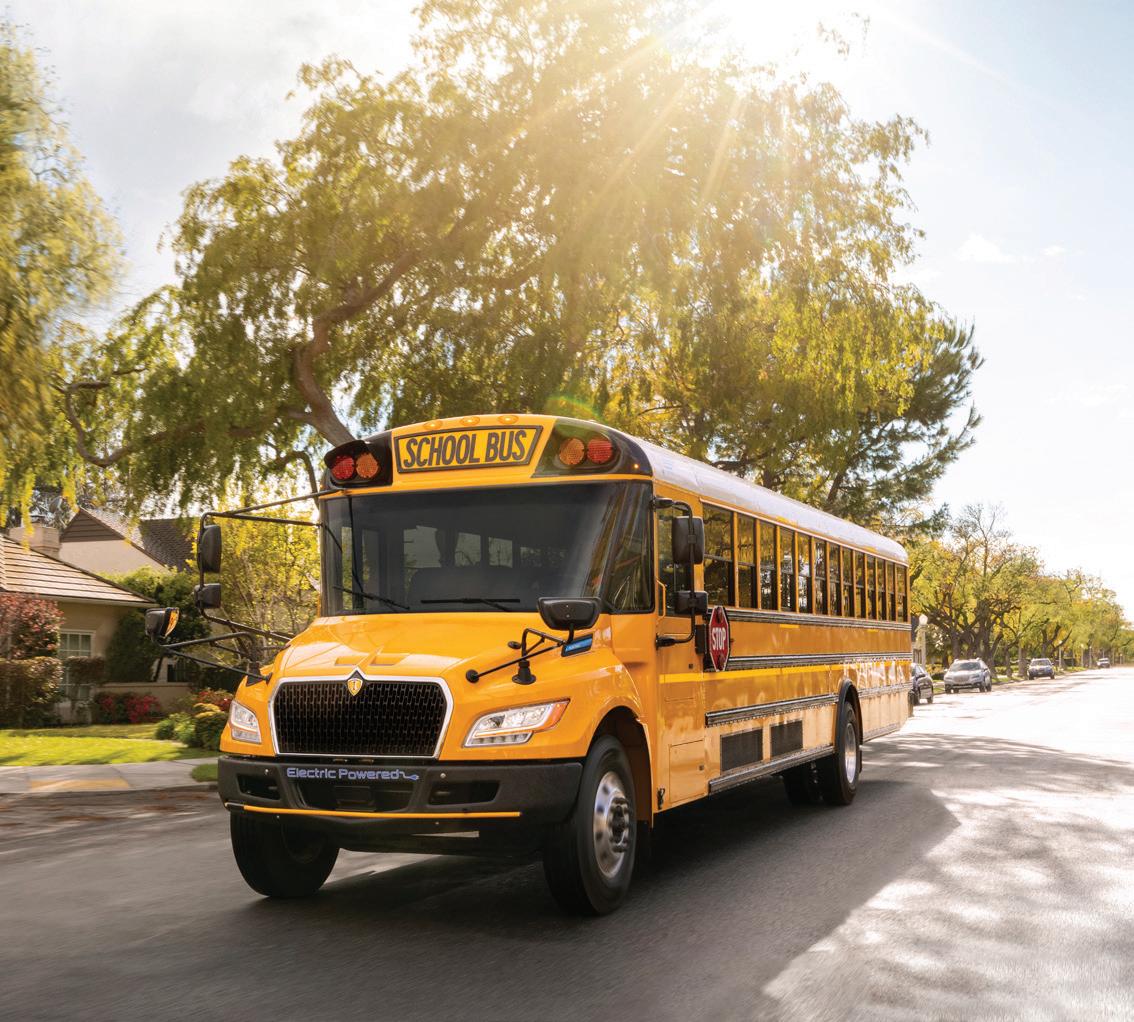





More than 30 Oklahoma secondary school leaders traveled to Seattle, Washington, from July 10-13, 2025, to attend the United Conference on School Leadership, a joint event hosted by NAESP and NASSP. Prior to the conference, award-winning principals Jason Hayes and Blaine Wise were honored during the annual NASSP National Education Leadership Awards event. United attendees were inspired by keynote presentations from Daymond John, Dr. Gholdy Muhammad, and John Maxwell and engaged in breakout sessions, networking opportunities, and professional learning experiences. OASSP and OAESP were proudly represented as Dr. Eric Fox, Andrea Sifers, Randy Williams, and Chris LeGrande presented a featured session titled “Creating Influencers.” Participants also enjoyed exploring the breathtaking sights of the Pacific Northwest. The conference proved to be an outstanding opportunity for learning, collaboration, and professional growth.
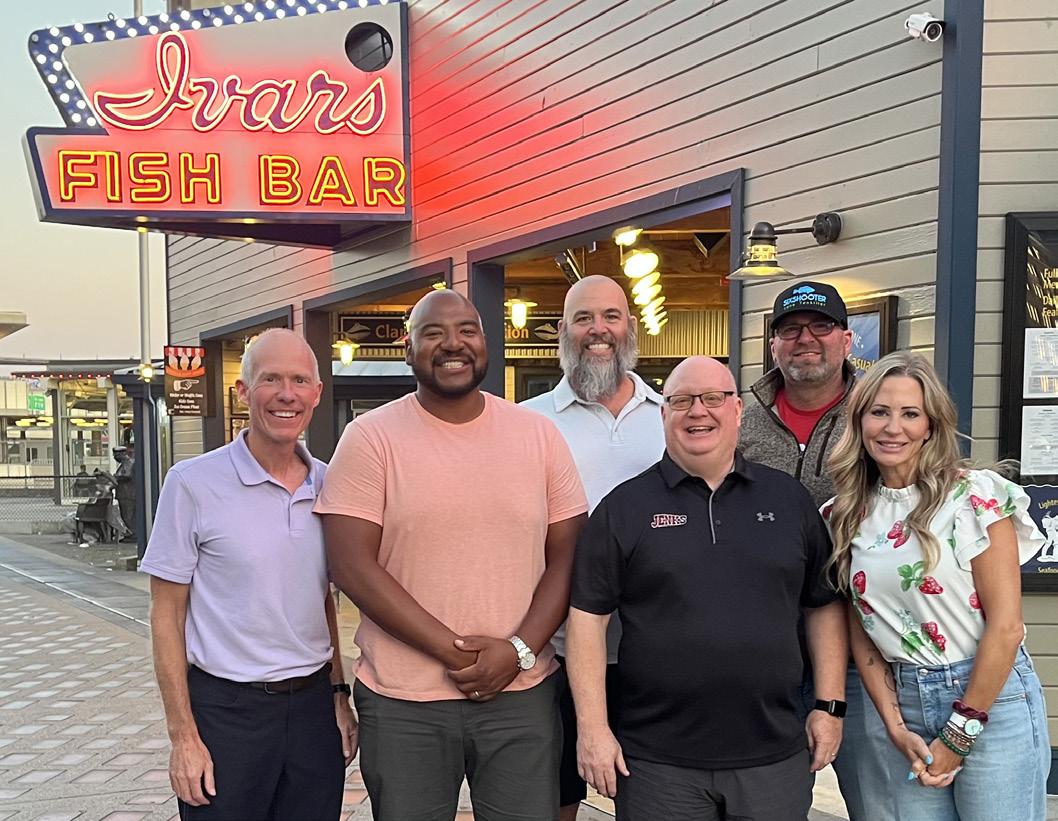
Chris LeGrande, Blaine Wise, Matt Johnson, Dr. Eric Fox, Joe Ballard, and Jaime Griggs enjoyed the sights – and seafood – of Seattle during the United Conference.
OMLEA UPDATE
OMLEA membership is based on members of CCOSA’s umbrella associations who serve middle-level students and elect to join the Oklahoma Middle Level Education Association. For the 2024-2025 year, we had 773 active members. OMLEA shares members primarily from among our elementary and secondary associations.
Congratulations to the following individuals for being elected regional representatives for a two-year term beginning in fall 2025 in their respective areas of the state:
■ NW Region: Jera Kiespert, Roosevelt Elementary School, Ponca City
■ OKC Area: Glen Adamson, Choctaw Middle School
The OMLEA Executive Committee held its final business meeting of the year on Thursday, June 12, 2025, during the annual CCOSA Summer Leadership Conference at the Oklahoma City Convention Center. Committee members approved the 2025-26 OMLEA budget and finalized committee meeting dates for the upcoming year. The group also recognized outgoing and incoming regional representatives for their service and leadership. The meeting concluded with a ceremonial passing of the gavel, as OMLEA President Laura Bullock of Idabel Public Schools officially transitioned leadership to President-Elect John Potter of Pryor Public Schools.
We are grateful for those who led OMLEA throughout the 2024-25 school year:
President: Laura Bullock, Idabel Public Schools
President-Elect: John Potter, Pryor Public Schools
NE Region: Shawn Matheson, Pryor Middle School
OKC Area: Traci Kay, Norman Alcott Middle School
Tulsa Area: Crystal Barber, Broken Arrow High School
SE Region: Laura Bullock, Idabel Public Schools
NW Region: Kurt Myers, Etta Dale Junior High School, El Reno
SW Region: Skeeter
Sampler, Central Middle School, Lawton
Past-President: Jennifer Patterson, Dewitt Waller Middle School, Enid
MS POY Representative: Arlis Henegar, Jay Middle School
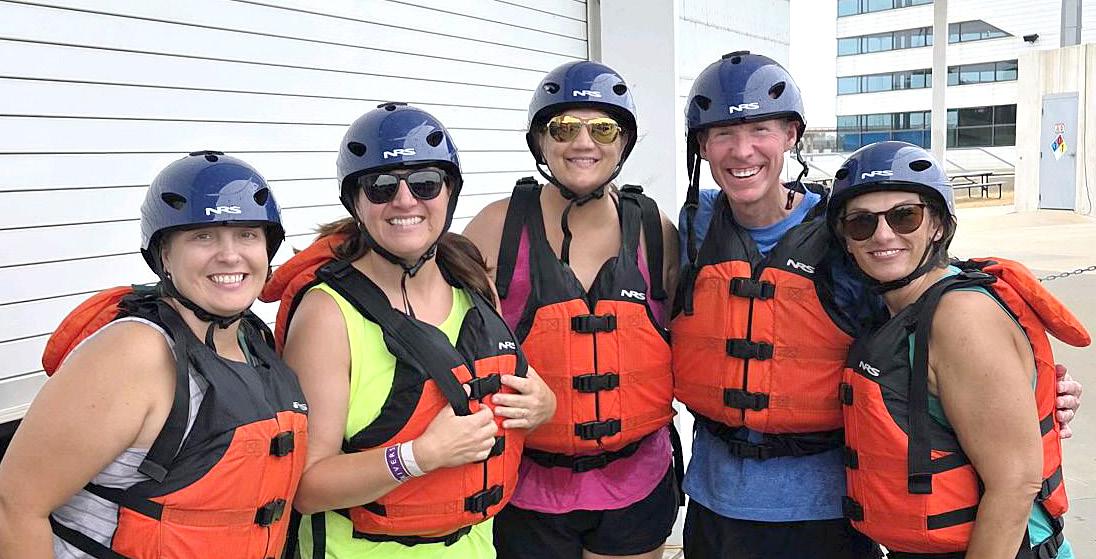
was joined by, left to right, Gretchen Slate, Cherith Aven, Brenna Magette, and Christy Moody.
The Oklahoma Principal Leadership Institute (OPLI) recently launched its fourth cohort with an intensive two-and-a-half-day session focused on key leadership priorities. Participants engaged in activities designed to enhance leadership assessment, develop a clear and compelling vision, strengthen team-building skills, foster a positive school culture, and leverage the power of professional learning communities (PLCs) to drive school improvement.
A highlight of the opening session was an experiential learning day at Riversport OKC, where cohort members participated in dragon boat racing, sky sliding, and whitewater rafting. These physically and mentally challenging activities pushed participants outside their comfort zones, promoting camaraderie, trust, and a sense of unity among school leaders. The cohort will reconvene in late October and early November for the second session, which will focus on analyzing assessment data and mastering strategies for navigating difficult conversations – critical skills for leading schools effectively. ■
The fourth cohort of OLPI included team-building at Riversport OKC, where Chris LeGrande




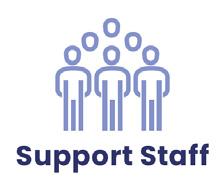

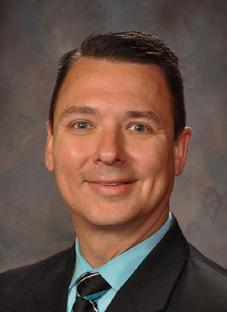
OAESP
Glen
Abshere,
OAESP Executive Director
OAESP membership had tremendous growth last year, ending the year with 905 members. This is a new all-time record membership for OAESP! It is time to renew your membership for the 2025-26 school year. Join online today at www.ccosa.org/membership. Encourage others to join – our goal this year is to have 920 members or more. Don’t forget to join your national association when joining OAESP. Thank you for being a member of CCOSA and OAESP!
The 2025 NAESP/NASSP United Summer Conference was held in Seattle, Washington, in July. This will be the last joint conference with NAESP and NASSP for a while. The conference provided great learning opportunities with great breakout sessions. Keynote speakers included Daymond John from Shark Tank; Dr. Gholdy Mohammed, Professor at the University of Chicago; and John Maxwell. The 2026 NAESP Annual Conference will be held July 13-15, 2026, at Disney’s Coronado Springs Resort in Orlando, Florida.
The OAESP Leadership Conference will be held February 25-26, 2026, at the Embassy Suites OKC Downtown/Medical Center. Information about the conference, including registration, hotel reservations, and RFPs for breakout sessions, will be released in October. Keynote speakers will also be announced soon. The conference will be a one-and-a-half-day format with breakout sessions. Please consider submitting a proposal to present at the conference and mark your calendars now to join us.
TeleLEAD is preparing for another year and will return on September 3. TeleLEAD meets on the first and third Wednesday of the month from 10 a.m. to 11 a.m. Join us virtually for this free open discussion of real-life scenarios that schools face.
The New Principals Academy is designed to promote an interactive discussion on topics essential for participants to develop understanding and knowledge of the leadership role at the school level. The purpose is to provide guidance to steer an early-career principal or assistant principal through the initial period of adjustment as a beginning administrator and set the foundation for a long and rewarding career as a school administrator. The academy meets four times in the fall semester and once in the spring for an advocacy experience. Cohorts meet in Oklahoma City or Tulsa. Registration is now open on our website
Principal Coaching and Mentoring: Supporting and Sustaining School Leaders training is designed for individuals who supervise principals or individuals who mentor other principals. This training will give participants tools to use when mentoring other leaders to provide thoughtful guidance. This cohort meets three times in the fall semester. Registration is now open on our website.
The Oklahoma Principal Leadership Institute is entering its fourth year. This year-long, seven-day training is designed for principals and assistant principals who are
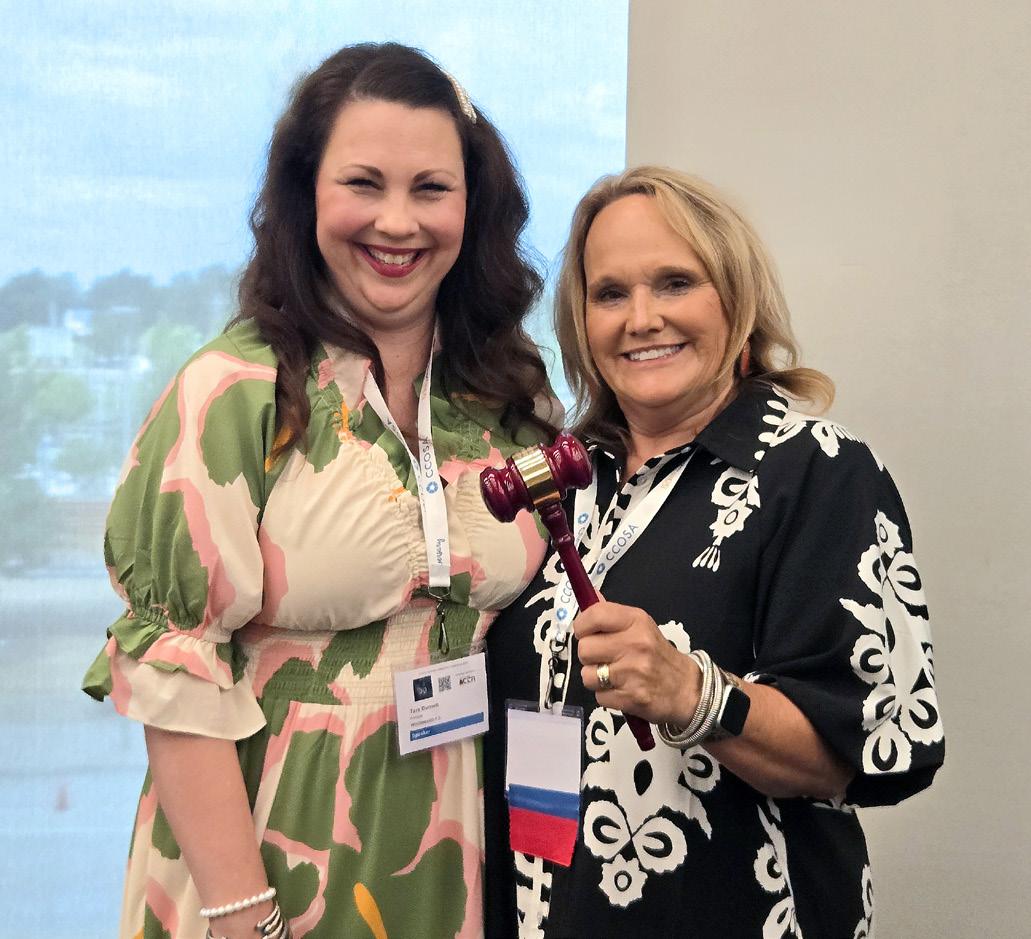
At the CCOSA Summer Leadership Conference in June, outgoing OAESP President Tara Burnett, Principal at Highland Park Elementary in Woodward, passed the gavel to incoming President Amy Estes, Principal at Sallie Gillentine Elementary in Hollis.
beyond the first year of service. This cohort takes a deep dive into essential skills of school leaders to be effective leaders. The application period for this institute is now closed for this year with 20 participants and will open for the next cohort in March 2026. ■

Ryan Hill
ryan@ccrdisaster.com
http://ccrdisaster.com
CCR is owned by Larry Landsteiner in the Tulsa area and Ryan Hill in the OKC area. They have over 35+ combined years in the restoration business. OKLAHOMANS WORKING FOR OKLAHOMANS. Locally owned and operated.



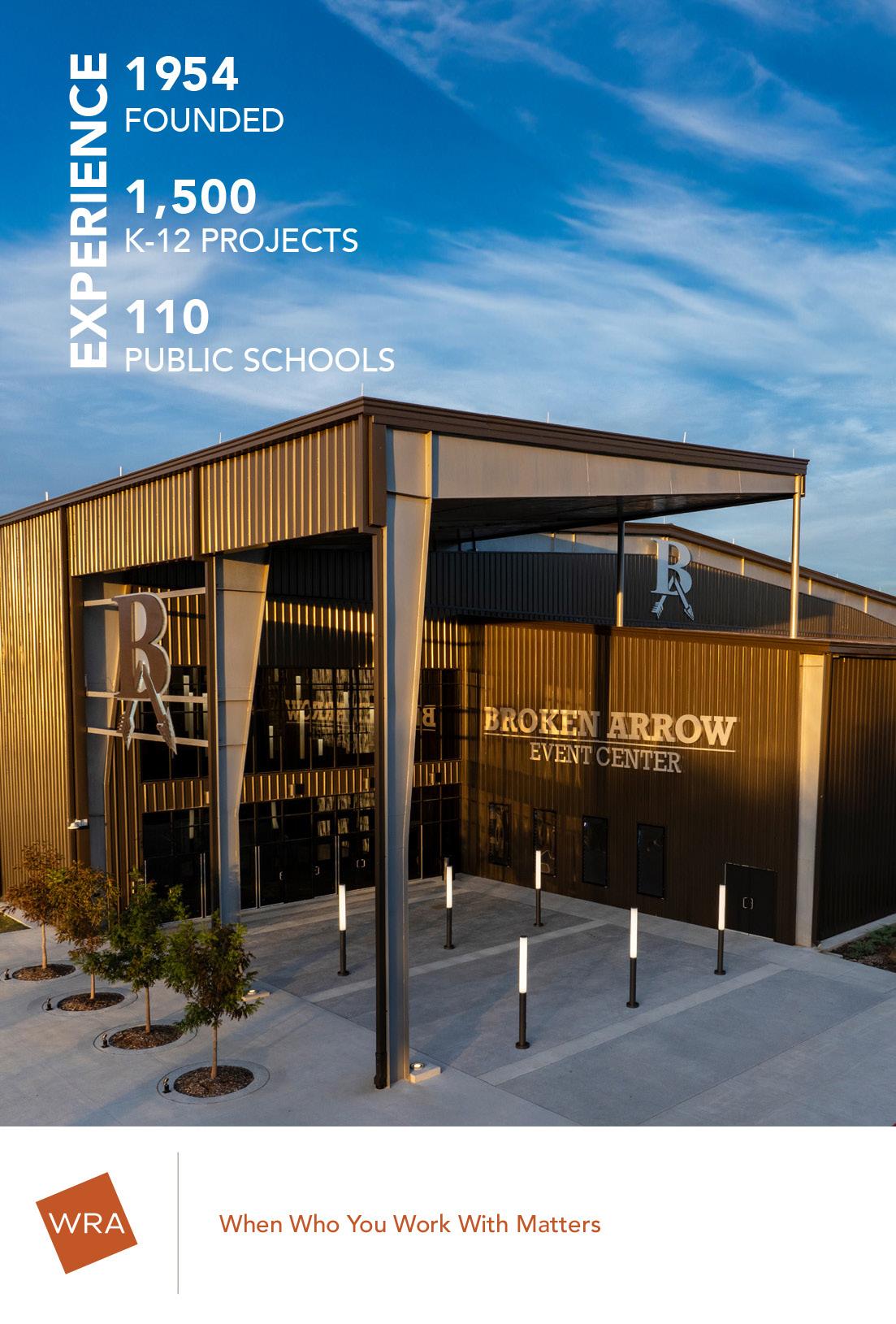

ODSS
Andrea Kunkel, CCOSA General Counsel & ODSS Executive Director
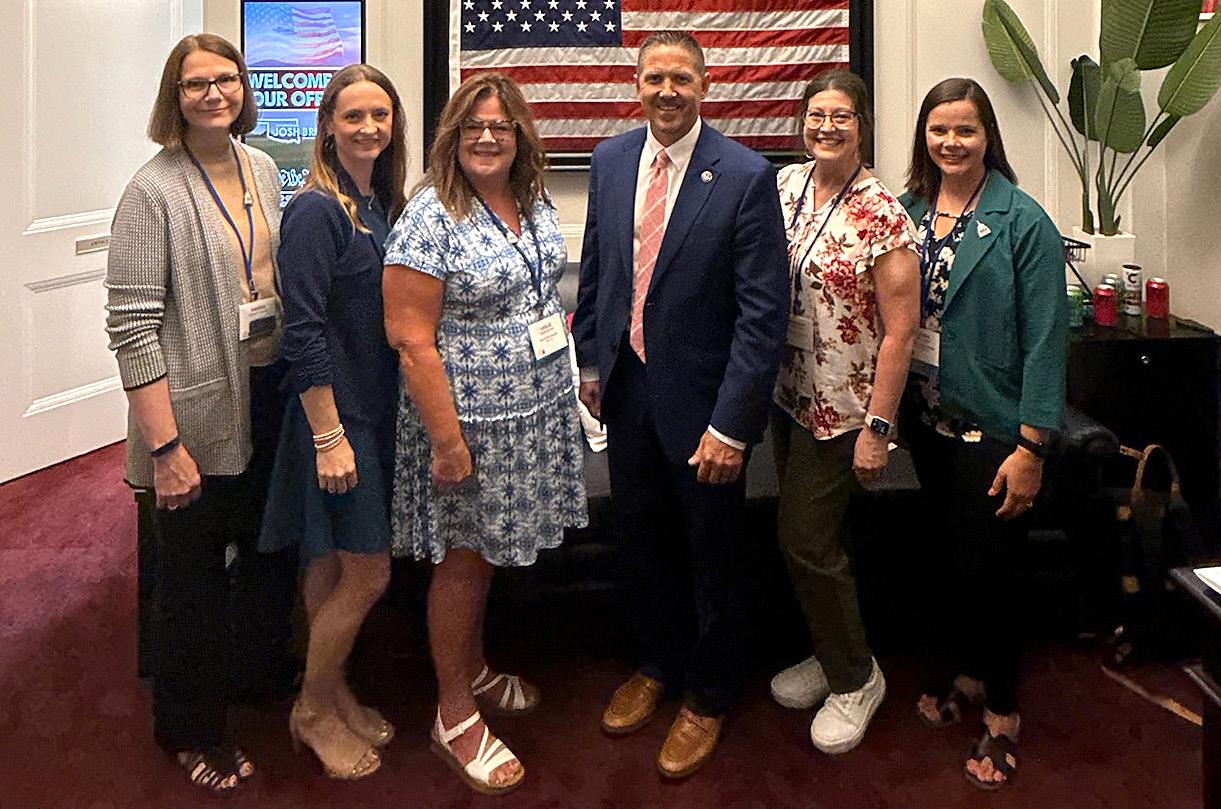
On July 1, the following officers and members began or continued their terms on the ODSS Executive Committee:
President: Michelle Dalton, Crowder Public Schools
President-Elect: Leslie Burnett, Pryor Public Schools
Past-President: Amy Swartz, Ponca City Public Schools
Legislative & Policy Liaison: Melissa Jarvis, Weatherford Public Schools
At-Large Representative: Melissa Channel, Comanche Public Schools
At-Large Representative: Karen Cooksey, Blanchard Public Schools
Tulsa Area (TADSS) Leader: Charlene Duncan, Owasso Public Schools
Northwest Representative: Melissa Graddick, Enid Public Schools
Southeast Representative: Becky Hale, Davis Public Schools
Northeast Representative: Austin Hula, Stillwater Public Schools
Southwest Representative: Diane Keene, Lawton Public Schools
Metro OKC Area Leader: Scott McCall, Piedmont Public Schools
At-Large Representative: Colin Raley, Deer Creek Public Schools
Southeast Leader: Brook Vernon, Plainview Public Schools
At-Large Representative: Stacy Walker, Spiro Public Schools
ODSS members met with Oklahoma legislative leaders in Washington, D.C., during the CEC/CASE Special Education Legislative Summit.
Left to right: Andrea Kunkel, Amy Swartz, Leslie Burnett, U.S. Rep. Josh Brecheen, Michelle Dalton, and Melissa Jarvis.
On July 8 at Yukon High School, ODSS welcomed over 100 new, early-career, and experienced special education directors and assistant directors to its New & Early Career Boot Camp. Experienced directors led discussions to help their newer colleagues identify and prepare for important July and August activities heading into the 2025-26 school year. The New & Early Career group began virtual sessions on July 29 that will span the entire school year. For a complete list of virtual meeting dates and information about joining the New & Early Career group, go to https:// www.ccosa.org/professional-learning/special-servicesworkshops
The ODSS officers traveled to Alexandria, Virginia, and Washington, D.C., on July 13-16 to hone their advocacy skills at the CEC/CASE Special Education Legislative Summit. Focusing on student mental health needs, appropriations, and special education personnel shortages, the group held discussions with Representatives Hern and Brecheen and their staff, as well as staff from the offices of Senators Lankford and Mullin and Representative Lucas.
ODSS is excited to announce that the Day 2 presenter at its Best Practices Conference on February 19-20 will be special educator, author, and behavior analyst Jessica Minahan, Ph.D., BCBA. Dr. Minahan will discuss overlooked strategies to increase engagement and reduce oppositional behavior. This will be her second time to present at the ODSS Conference after previously attending in 2019 and receiving excellent audience responses. For further information about Dr. Minahan, go to https://jessicaminahan.com. Please save the conference dates; registration opens in September. ■
READ TO LEAD

The 21 Irrefutable Laws of Leadership
(25th Anniversary Edition by John C. Maxwell)
A deeper dive into three principles relevant to K-12 education.
By Dr. Jeanene Barnett, CCOSA Director of Policy, Research & TLE and Chris LeGrande, Executive Director of OMLEA and OASSP
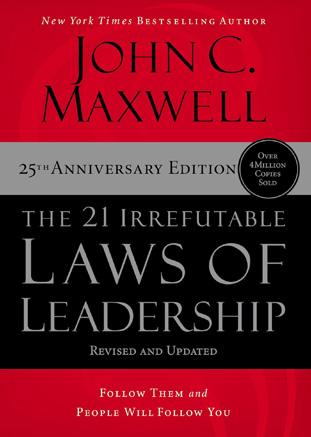
Leadership Laws for Transformational Impact in Oklahoma Public Schools
In the dynamic landscape of public education, effective leadership is not optional –it is essential. John C. Maxwell’s The 21 Irrefutable Laws of Leadership offers timeless principles that resonate deeply within the PK–12 public school context. Among the 21 laws, three stand out for their practical and transformative relevance: The Law of the Lid, The Law of Navigation, and The Law of Connection. Each law provides a foundational lens through which school leaders can elevate performance, culture, and student outcomes.
1. The Law of the Lid: Leadership Ability Determines Effectiveness
Summary
Leadership ability acts as a lid on the effectiveness of any organization. A school will only rise to the level of its leadership.
Application to Public Schools
In the PK–12 setting, this law underscores the reality that even the most well-intentioned reform efforts or programs will falter if school leaders do not possess the capacity to lead with clarity, vision, and resilience. District and site-level administrators serve as multipliers – or limiters – of school improvement. Investing in leadership development for principals, assistant principals, and central office leaders is critical. As Maxwell puts it, raising the leadership lid raises the entire organization.
Implication
Educational outcomes improve when leadership capacity is systematically developed. Leadership coaching, targeted professional development, and succession planning are strategic necessities – not luxuries.
2. The Law of Navigation: Anyone Can Steer the Ship, but It Takes a Leader to Chart the Course
Summary
Leaders chart the course by seeing the destination clearly, anticipating challenges, and communicating the plan.
Application to Public Schools
In school leadership, vision is not enough – planning, foresight, and strategy are essential. Whether implementing new instructional models, navigating budget reductions, or responding to crises such as learning loss or staffing shortages, the ability of school leaders to “navigate” is vital. The superintendent and/or principal, like a captain, must chart a path that includes all stakeholders – teachers, students, families, and the community. As Maxwell notes in the “Law of Influence” chapter, “He who thinks he leads, but has no followers, is only taking a walk.”
Implication
Strategic planning must go beyond compliance checklists and become a living document that drives daily decisions. Data analysis, stakeholder feedback, and intentional communication plans form the backbone of effective navigation in schools.
3. The Law of Connection: Leaders Touch a Heart Before They Ask for a Hand Summary
Leaders must connect with people emotionally before they can influence them.
Application to Public Schools
Relationships are central to the work of public education. For Oklahoma school leaders, connection is more than visibility in the hallways – it is about building trust, demonstrating empathy, and cultivating a culture of belonging. Whether inspiring teachers, engaging parents, or
addressing student behavior, emotional intelligence is a leadership imperative. Remember that old saying: People don’t care how much you know until they know how much you care.
Implication
Leadership success in schools depends on meaningful relationships. Listening actively, being accessible, and showing authentic care are not soft skills – they are essential leadership strategies that build morale and sustain momentum.
CONCLUSION:
In an era marked by complexity and change, Oklahoma leaders must remain steadfast and embody principles that withstand shifting educational landscapes. The Law of the Lid challenges leaders to grow in order to lift their schools. The Law of Navigation reminds them to lead with foresight and clarity. The Law of Connection reinforces that influence begins with relationships. Together, these laws serve as a compass for school leaders seeking to lead with excellence, integrity, and impact. ■
